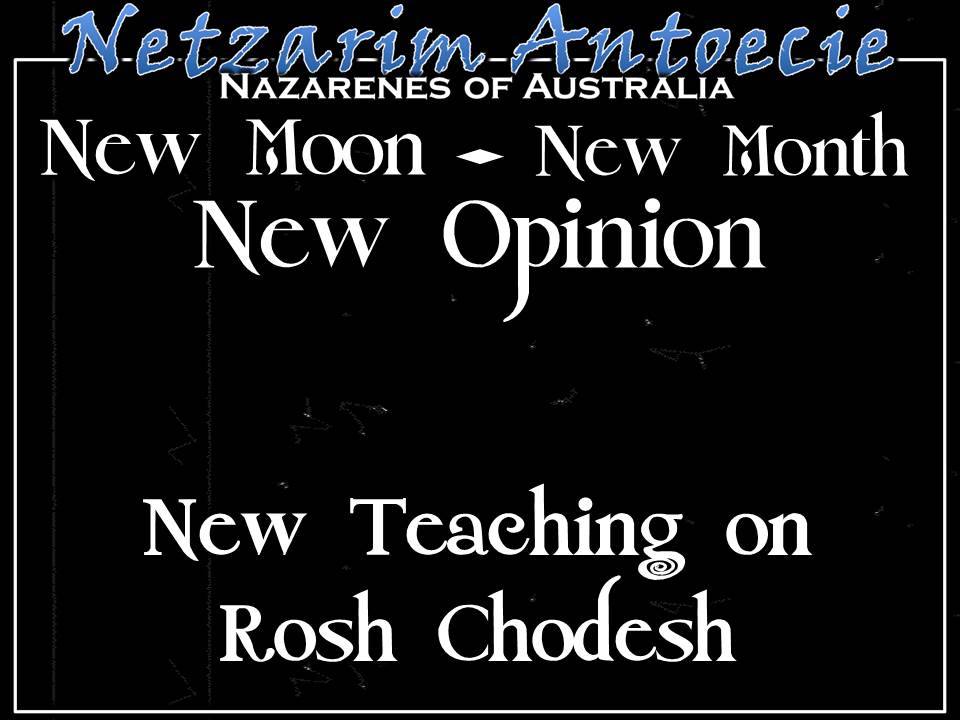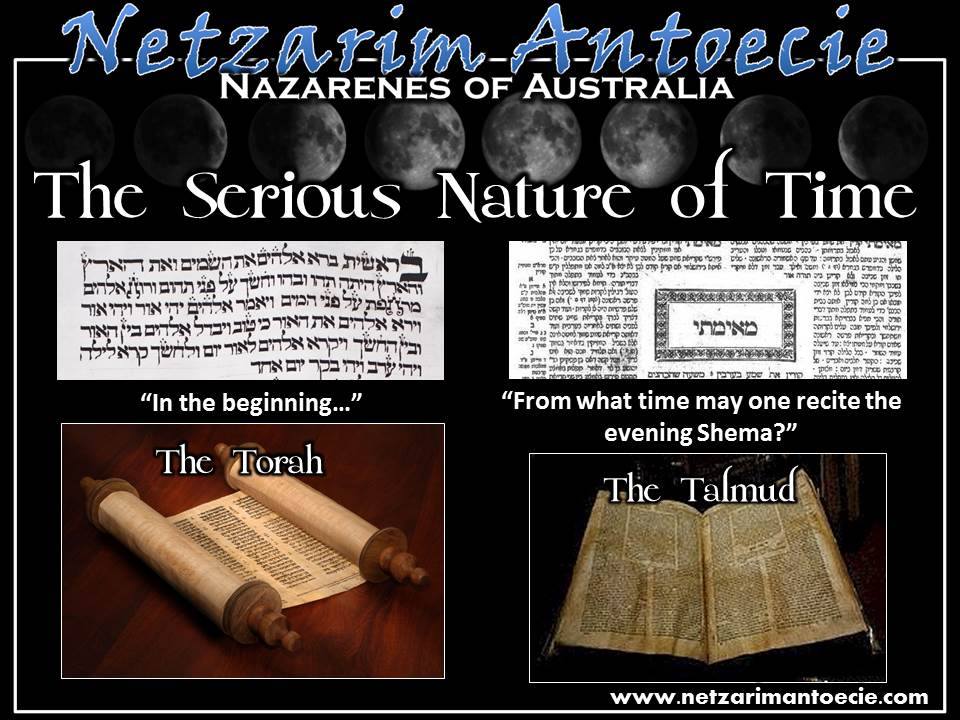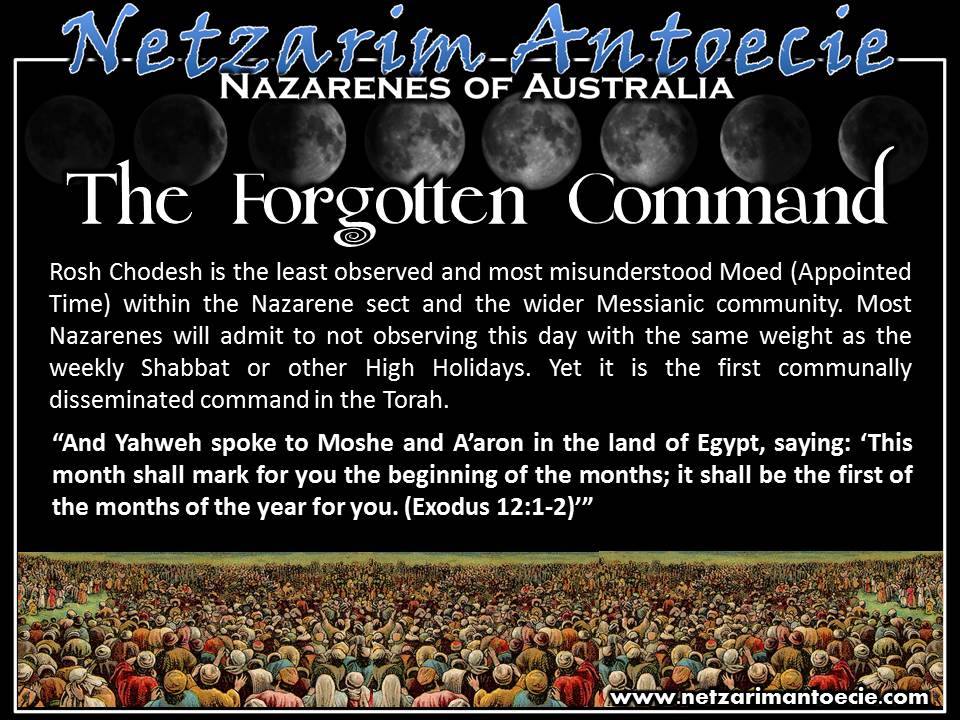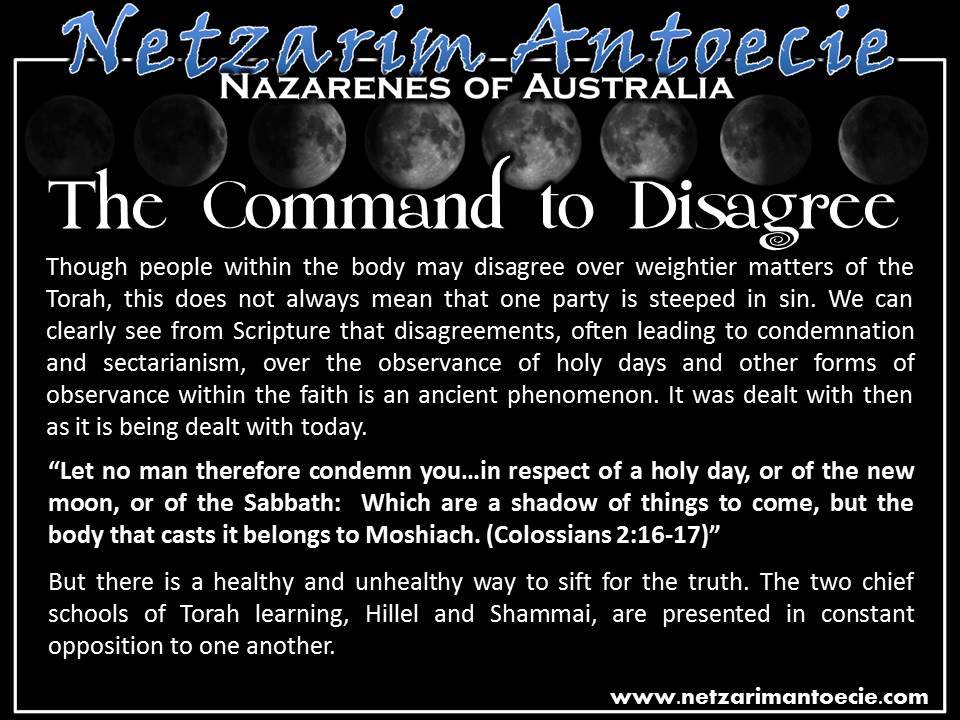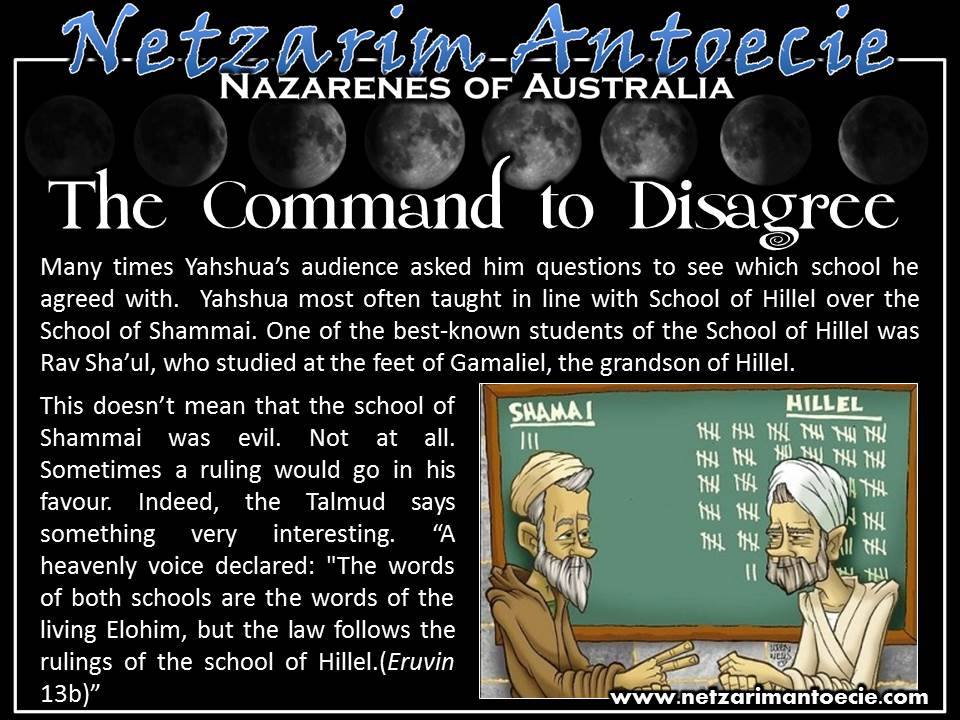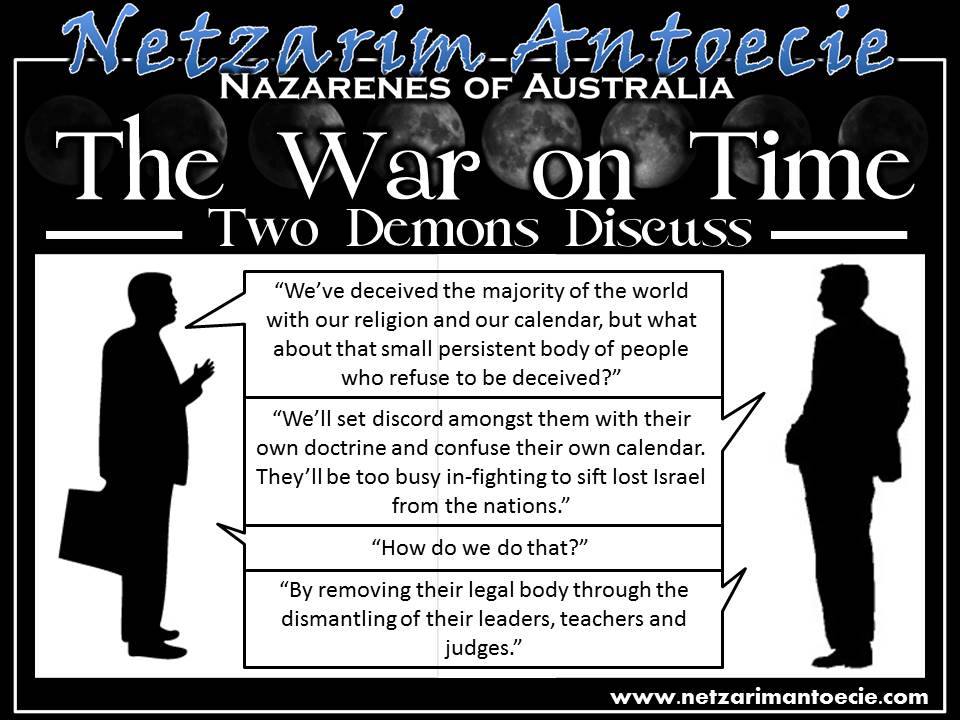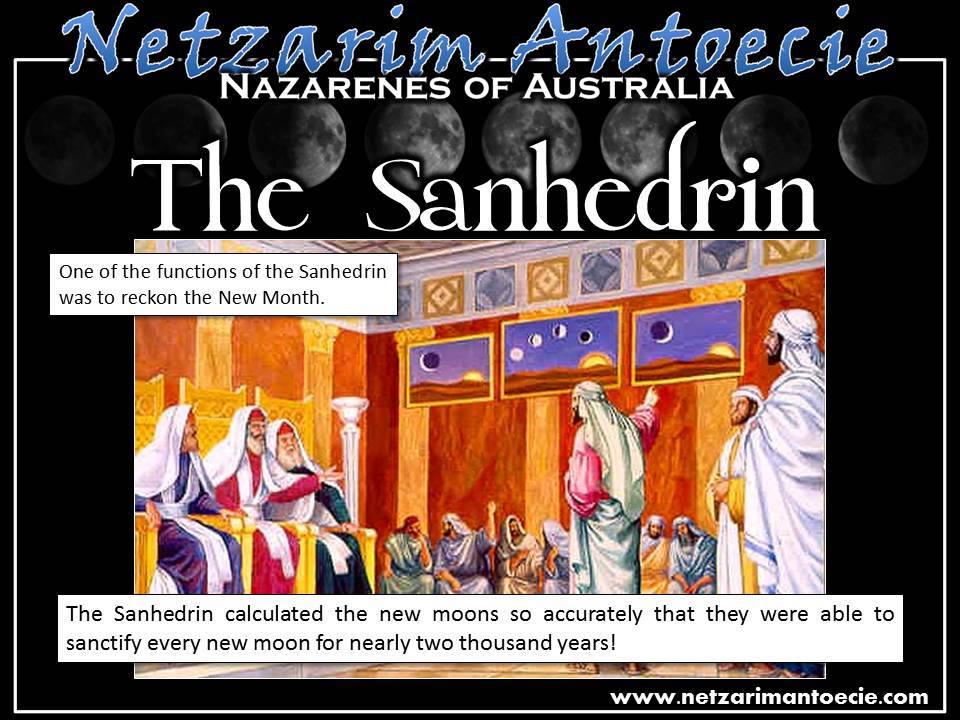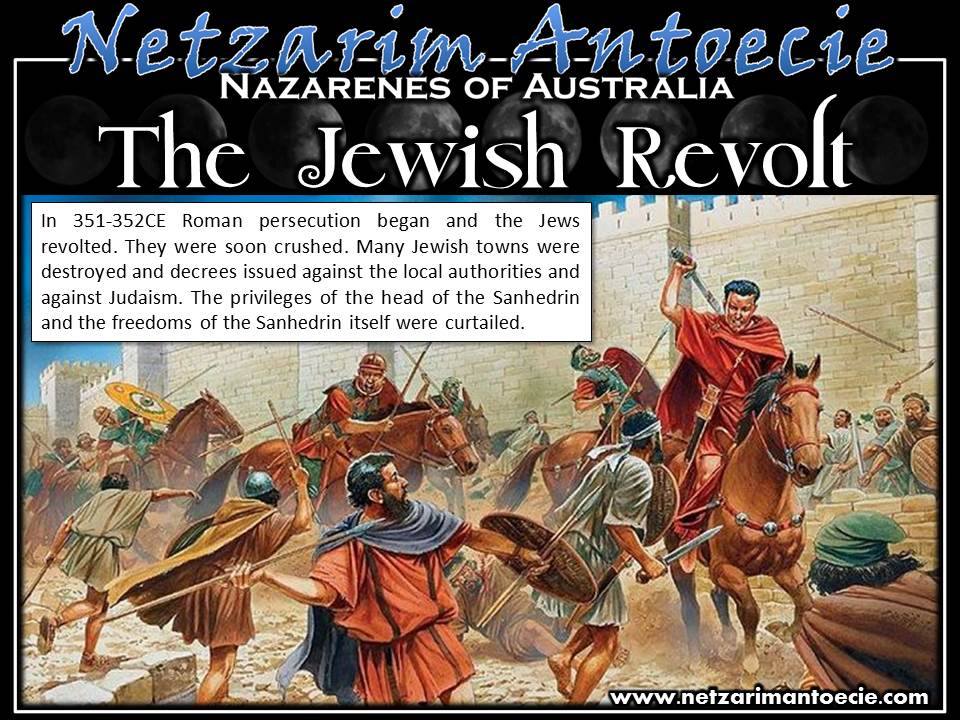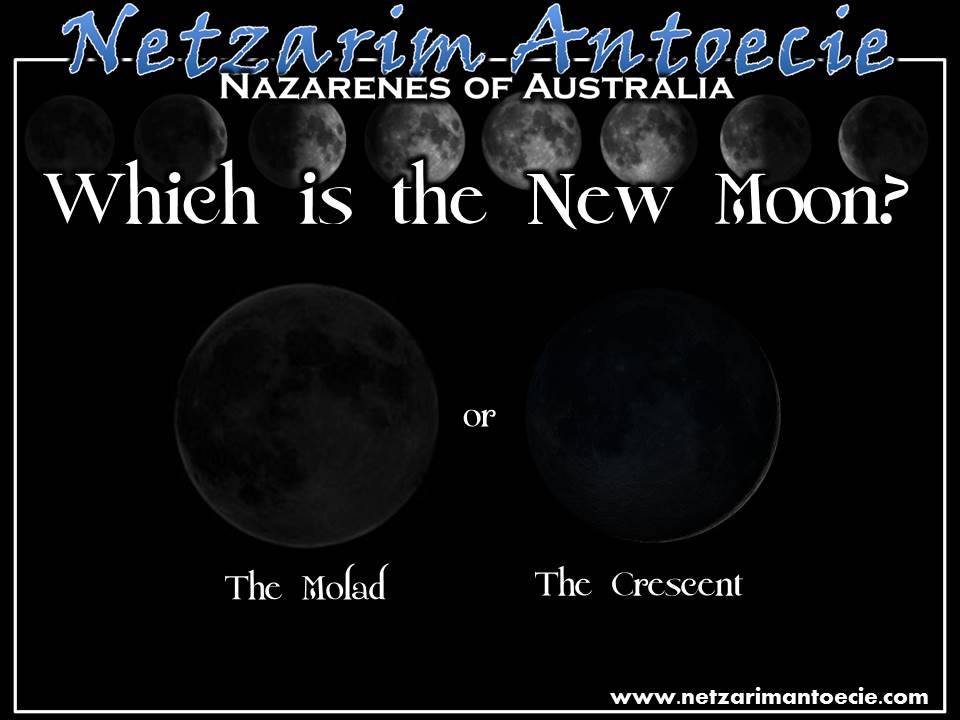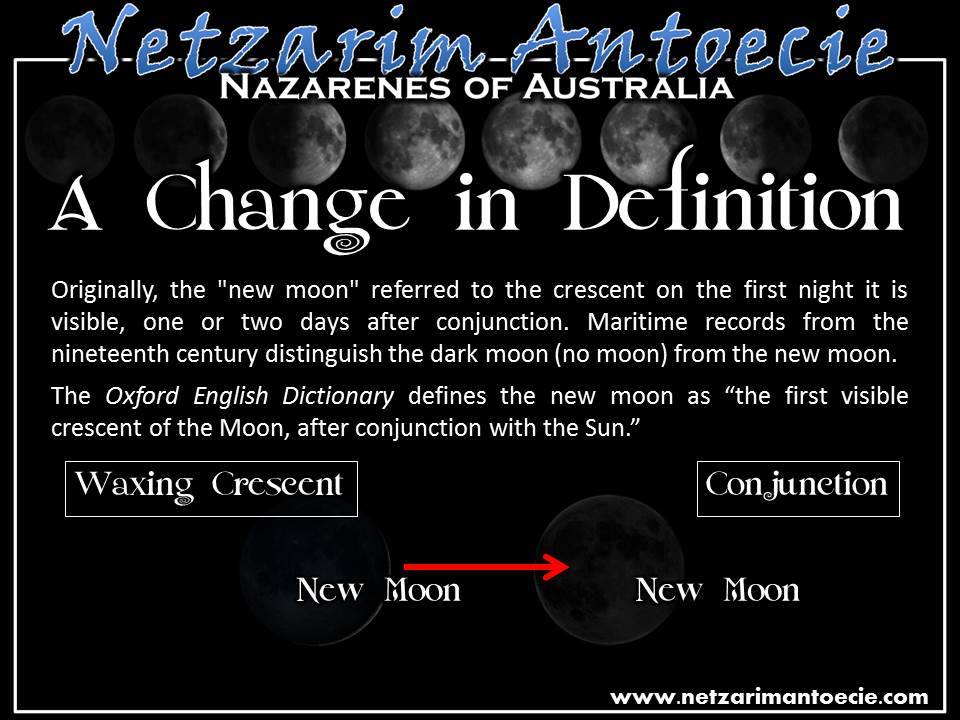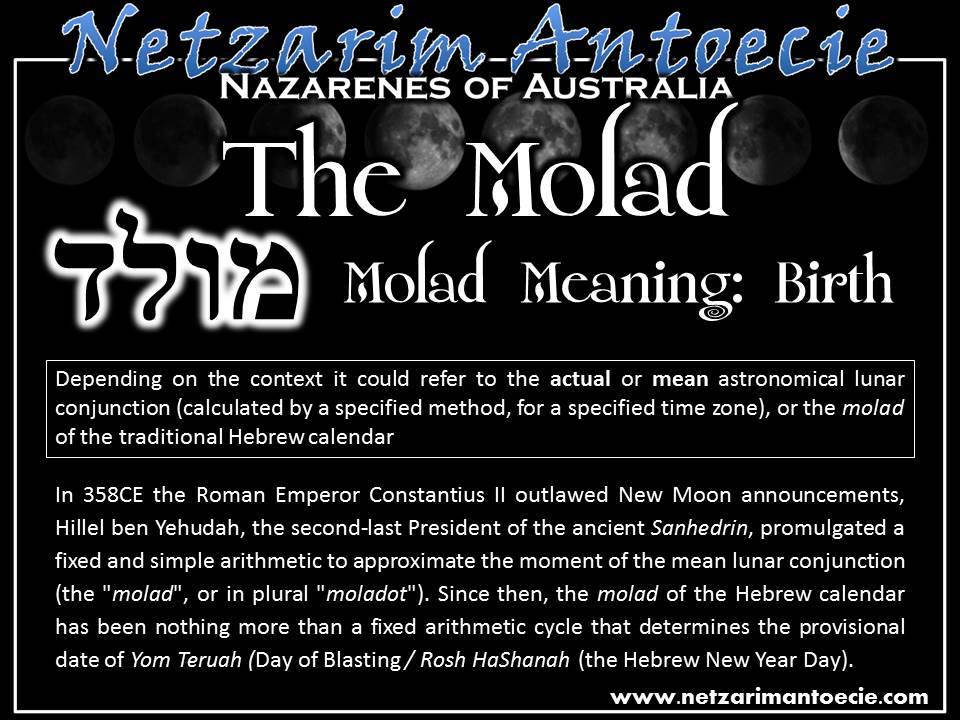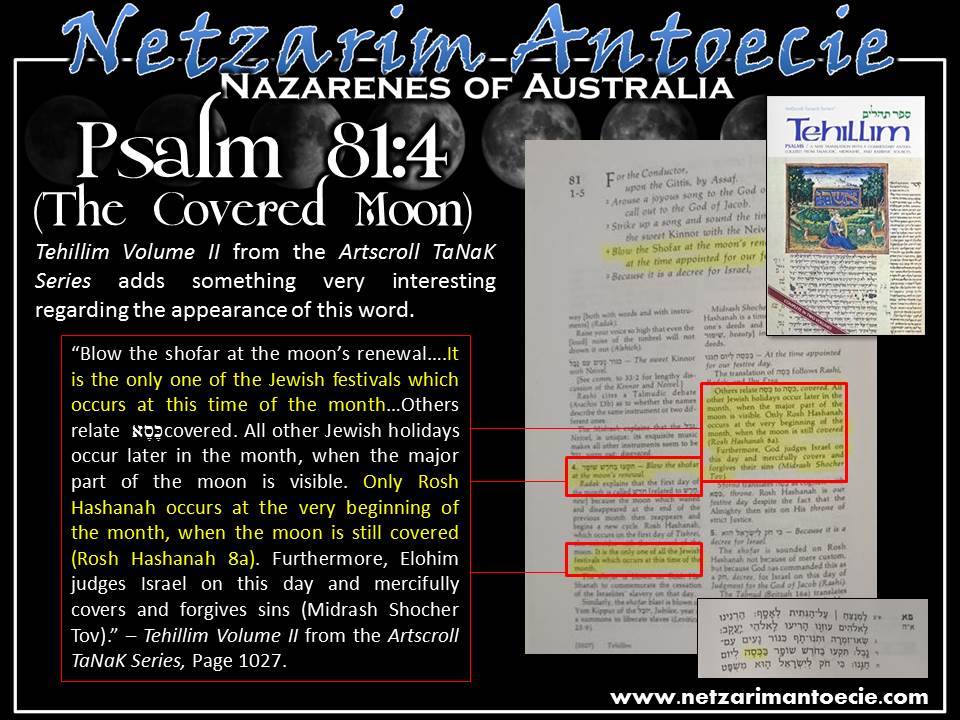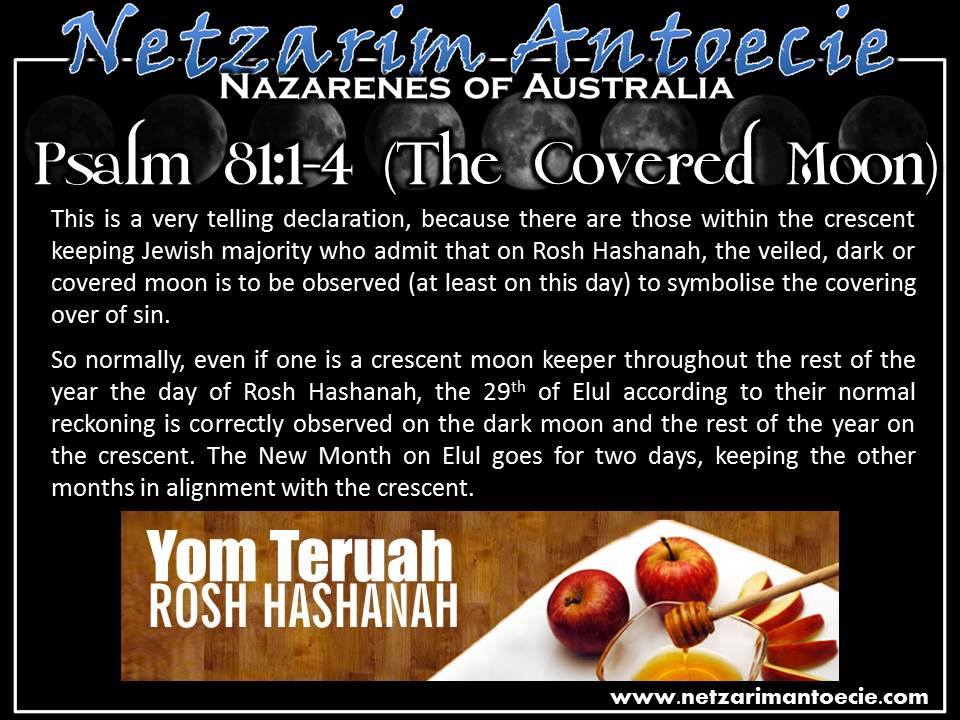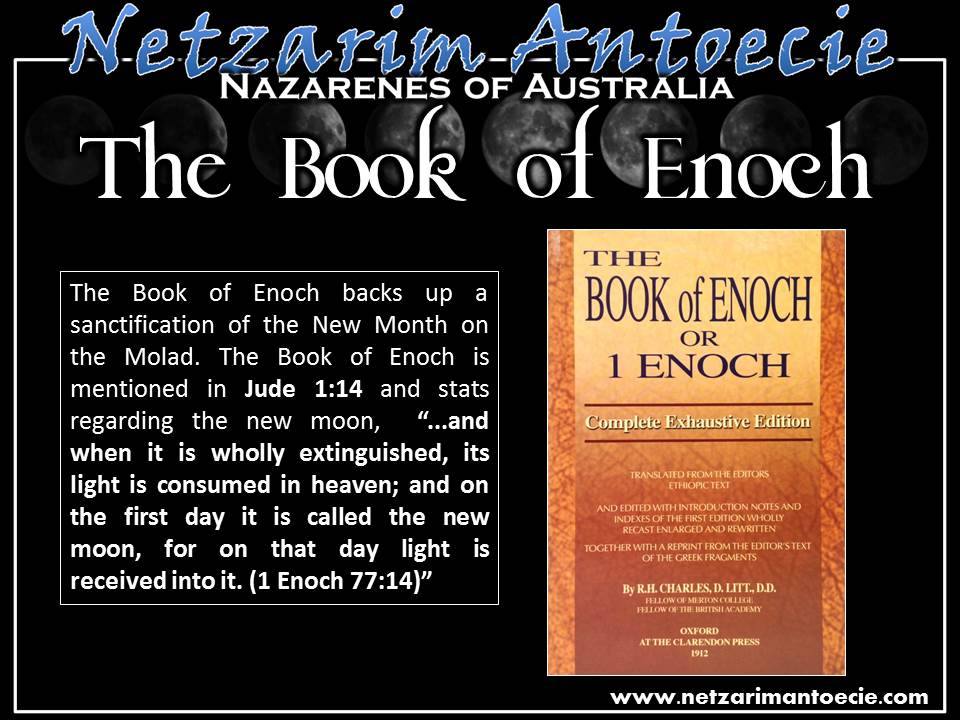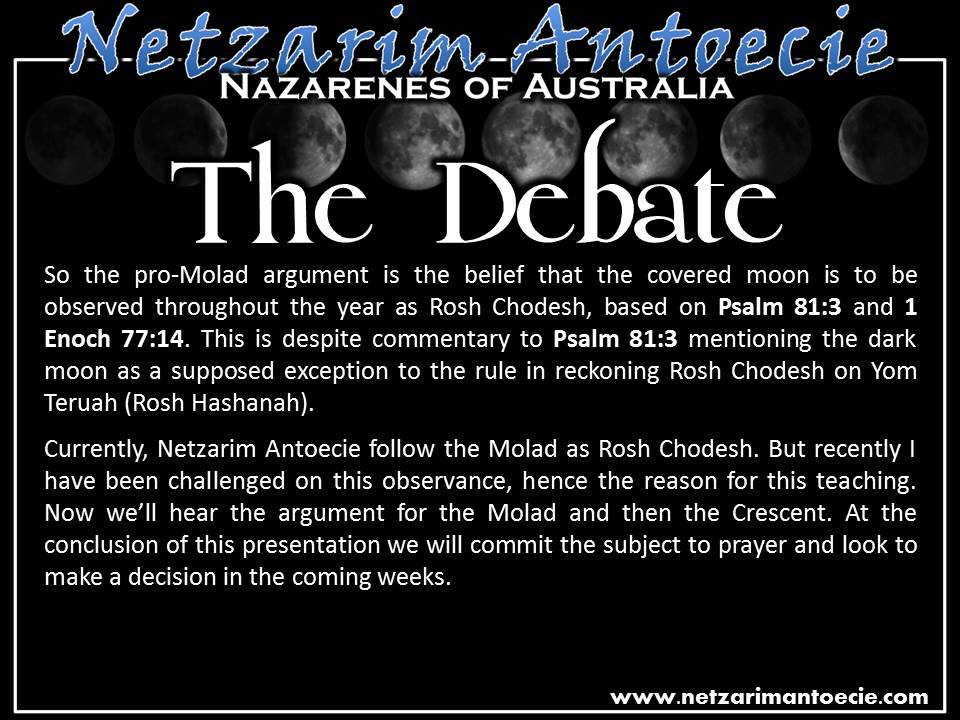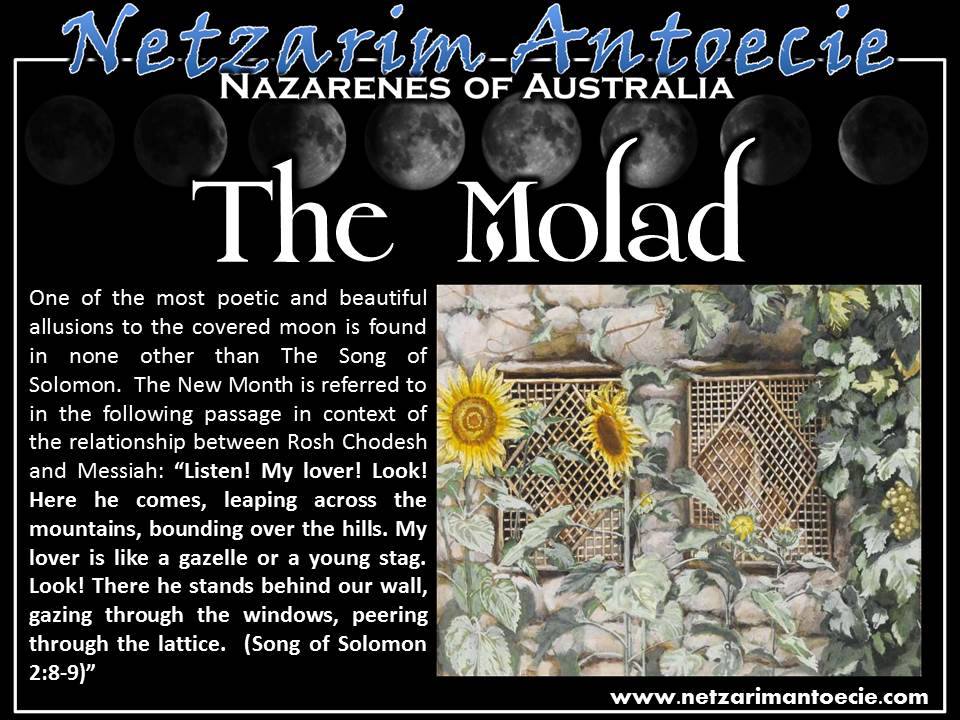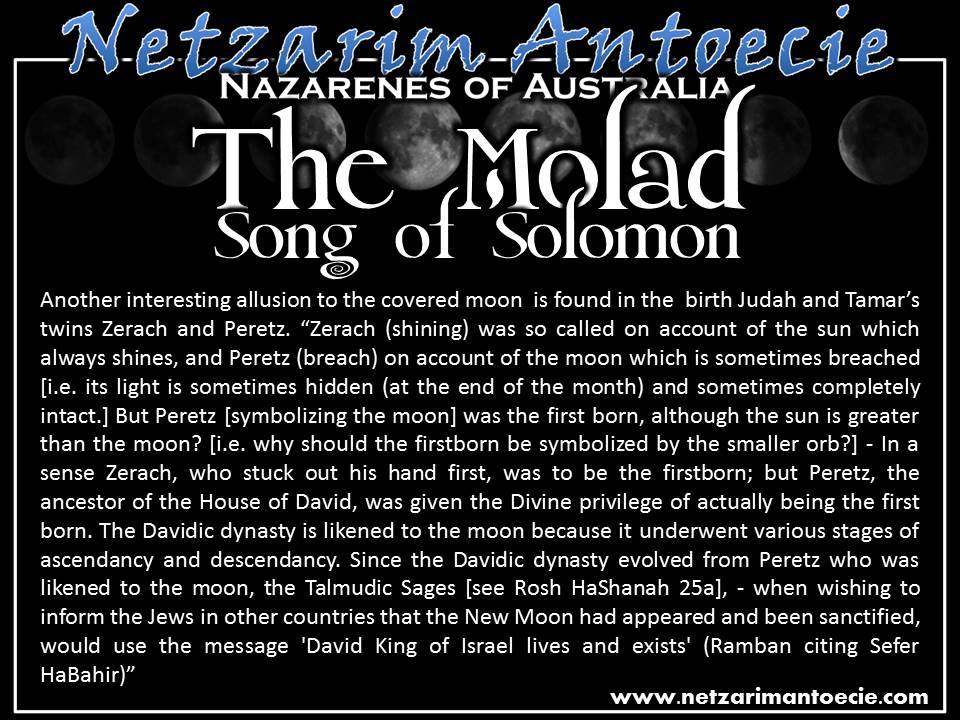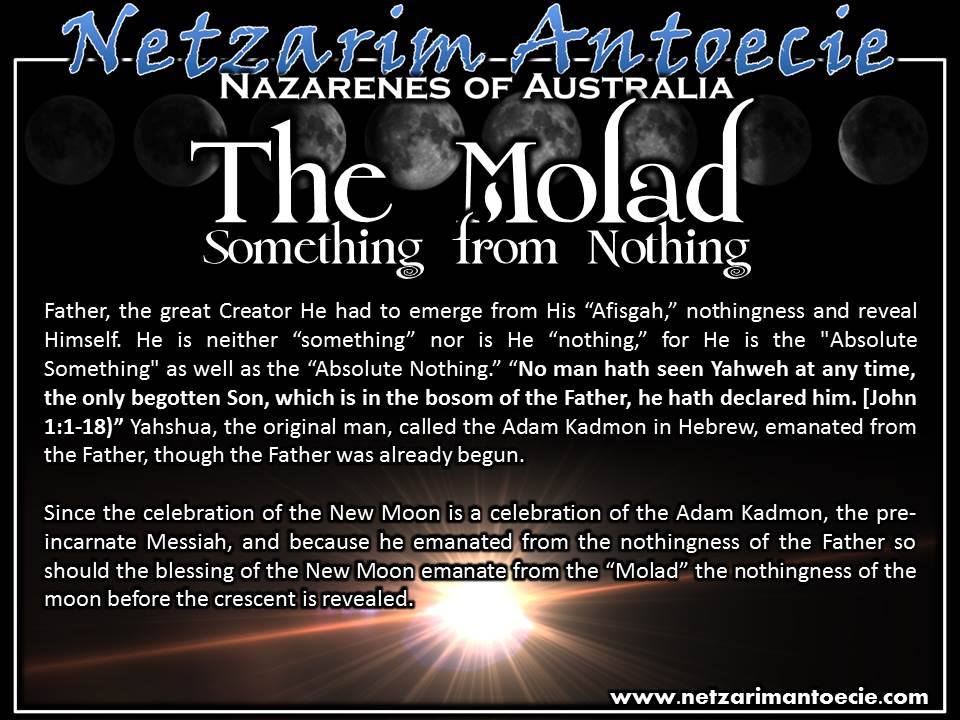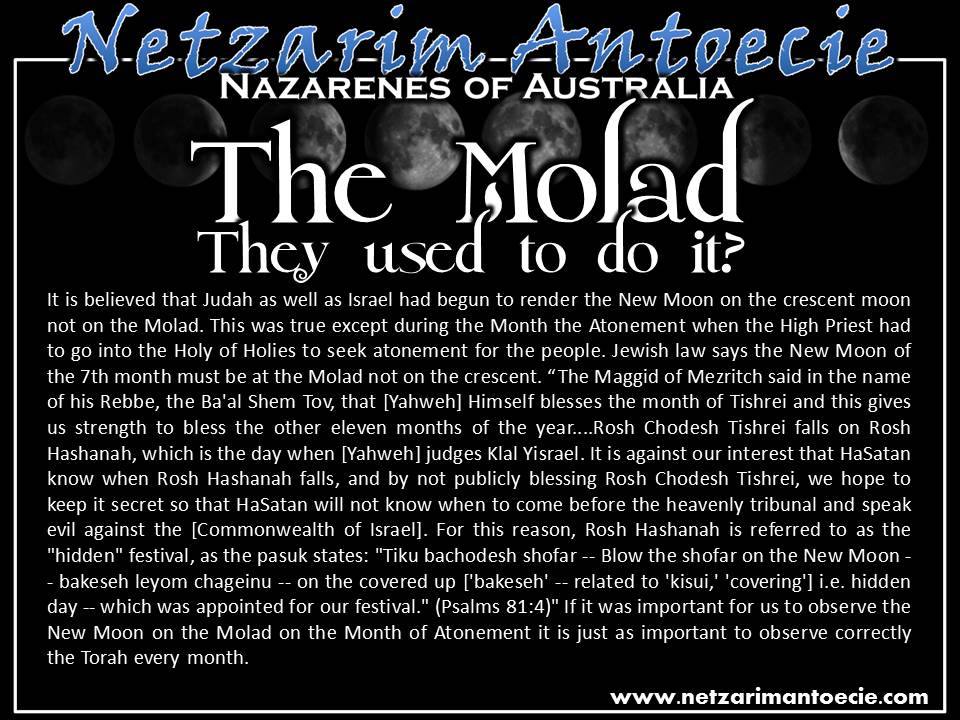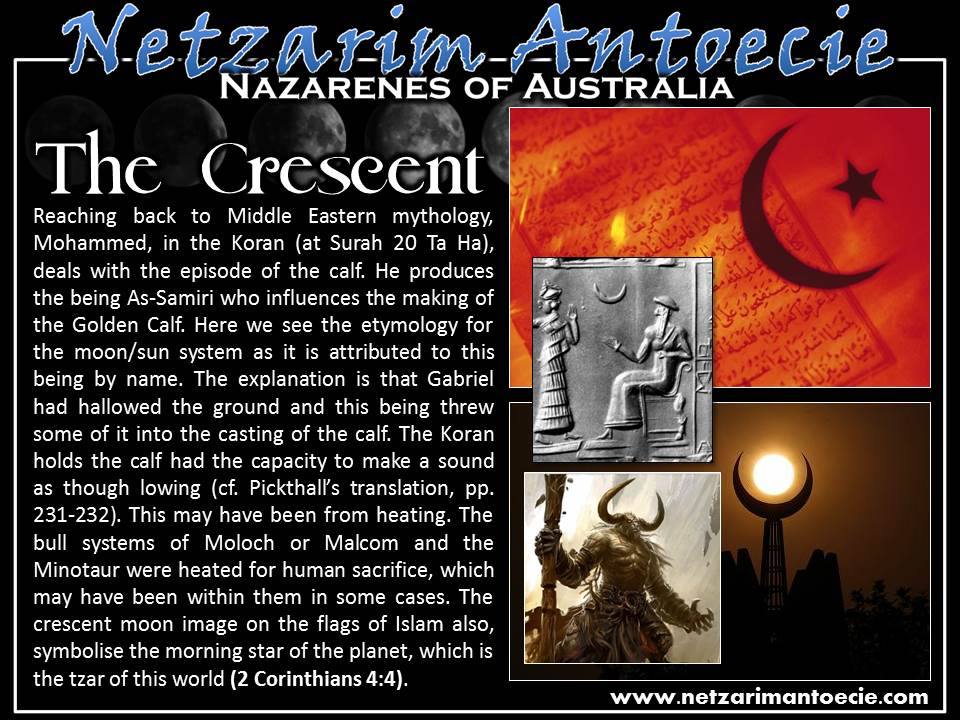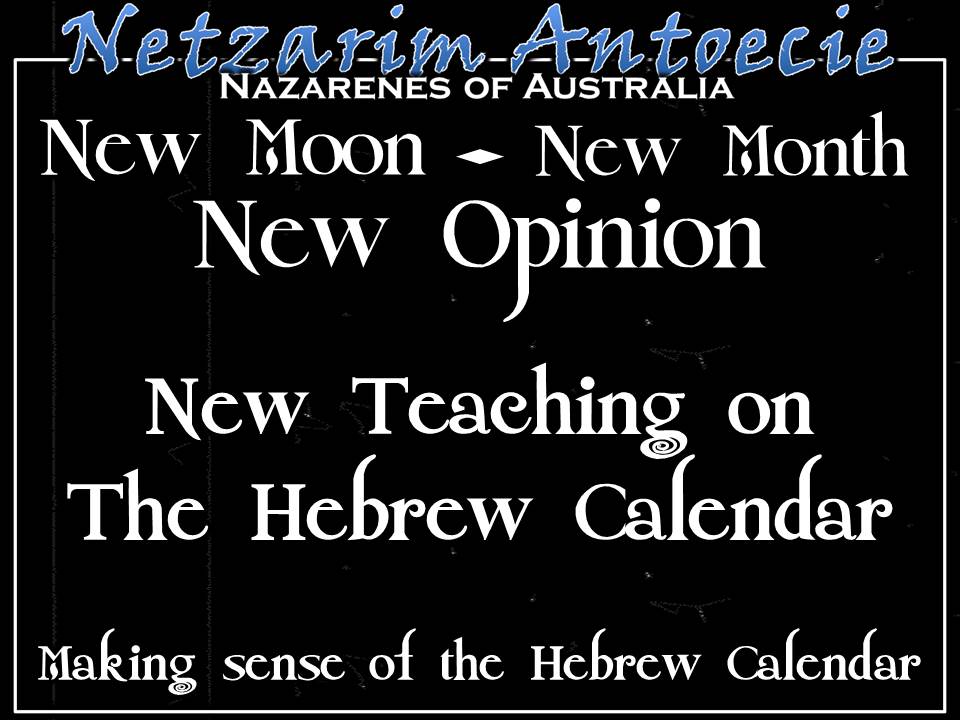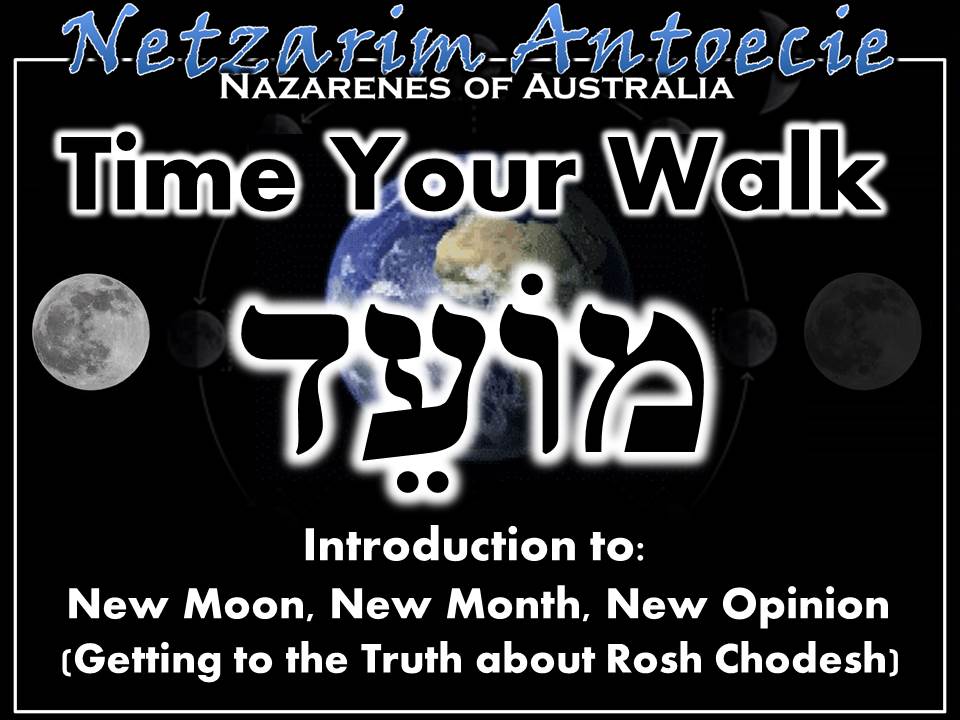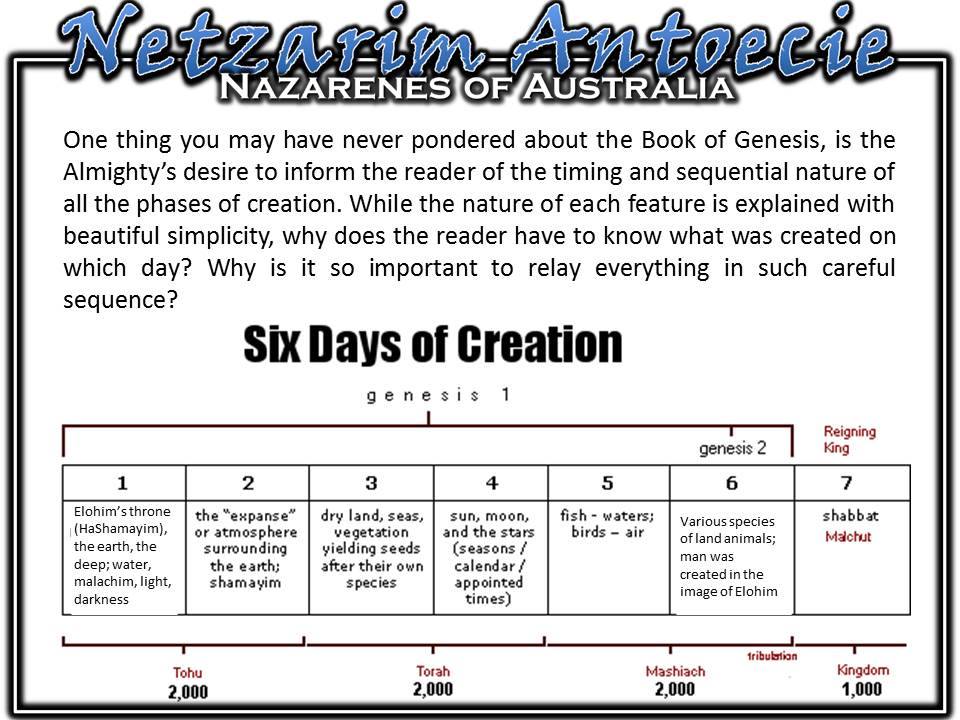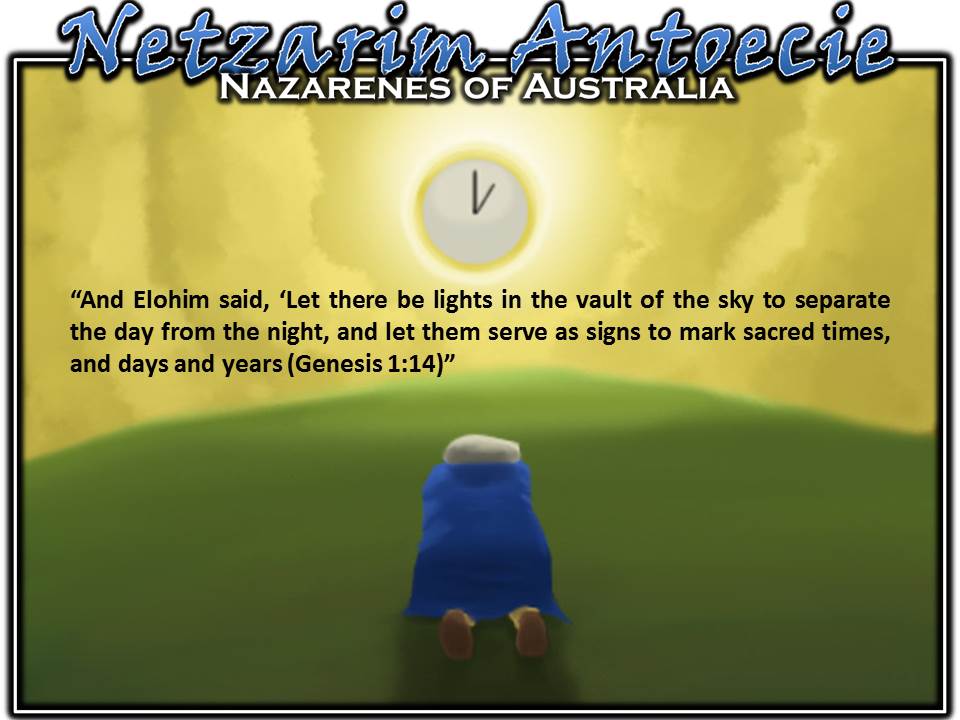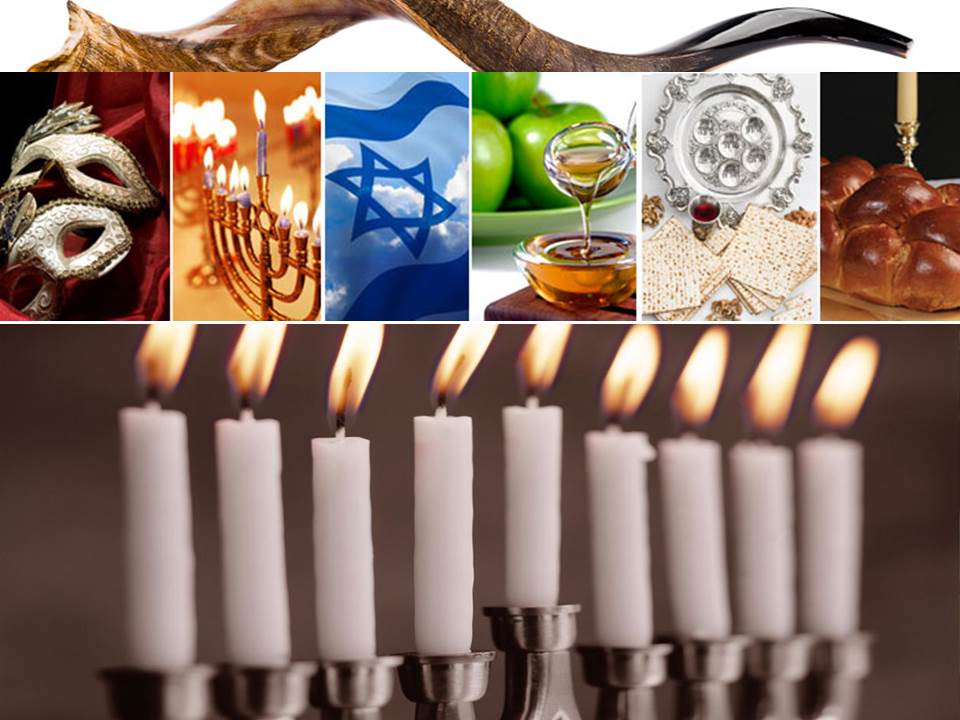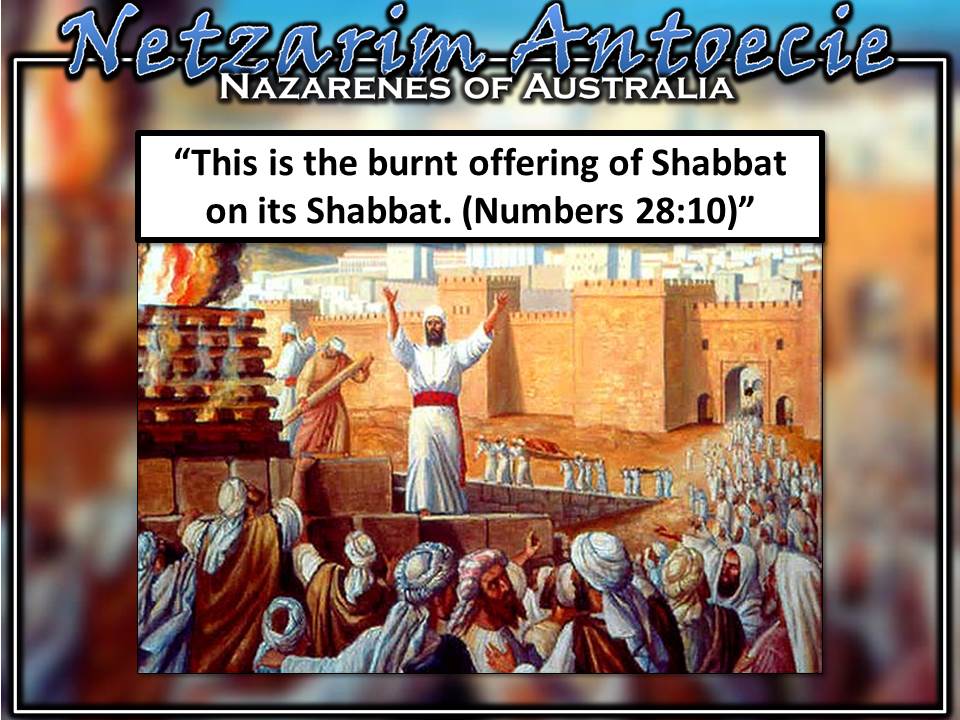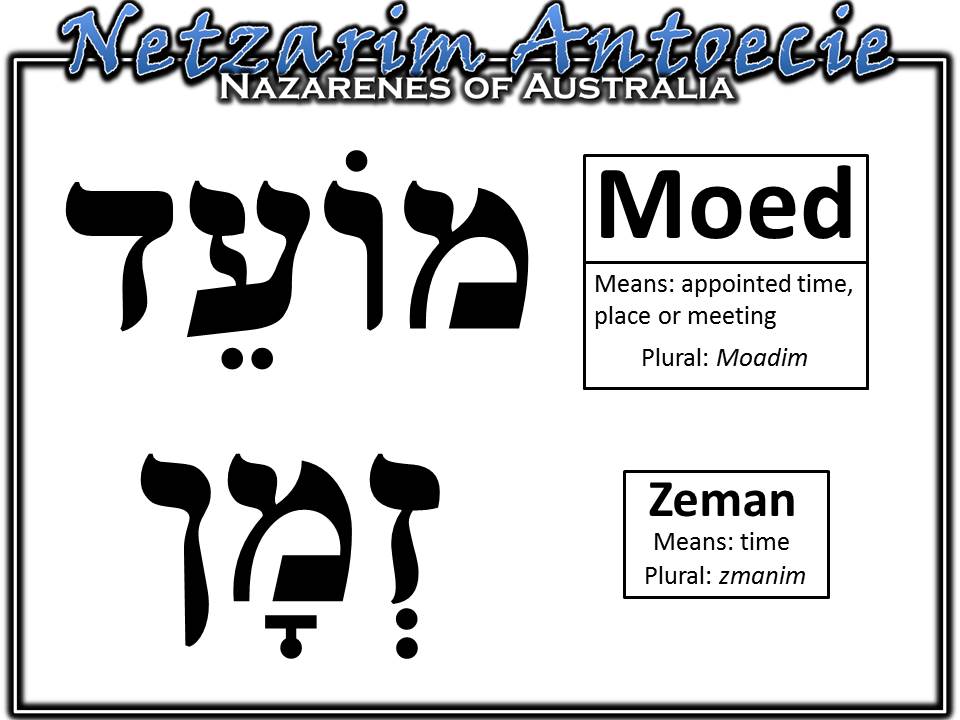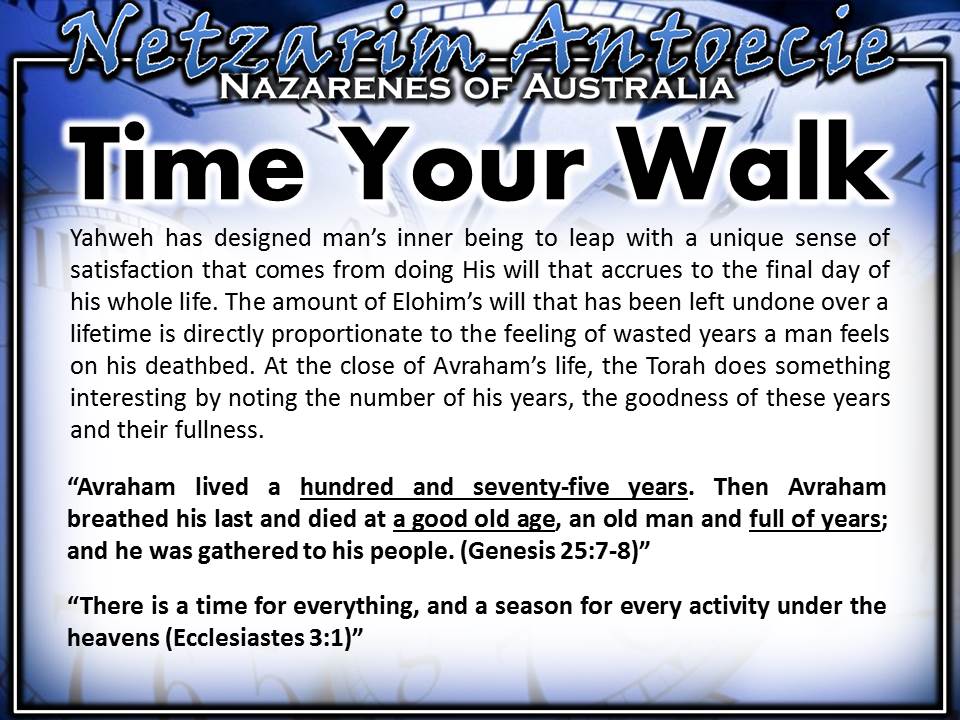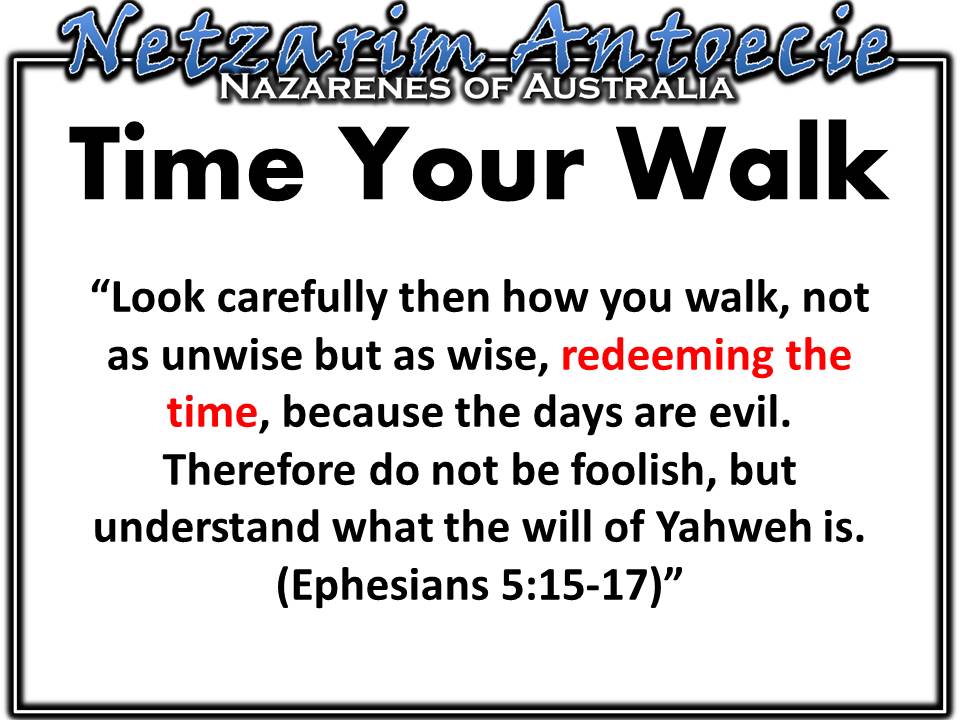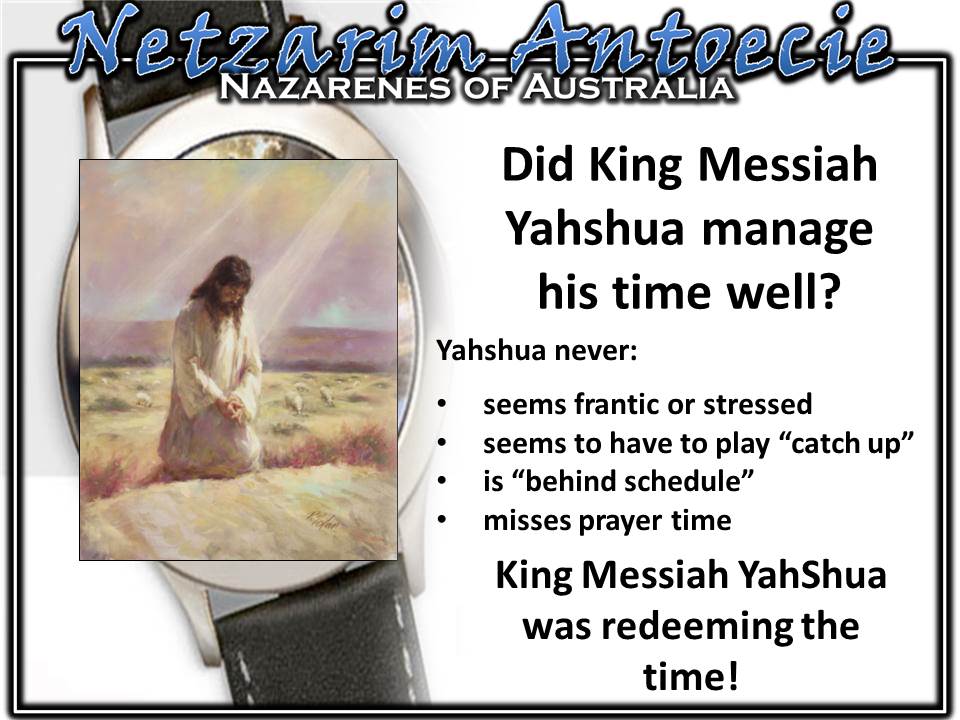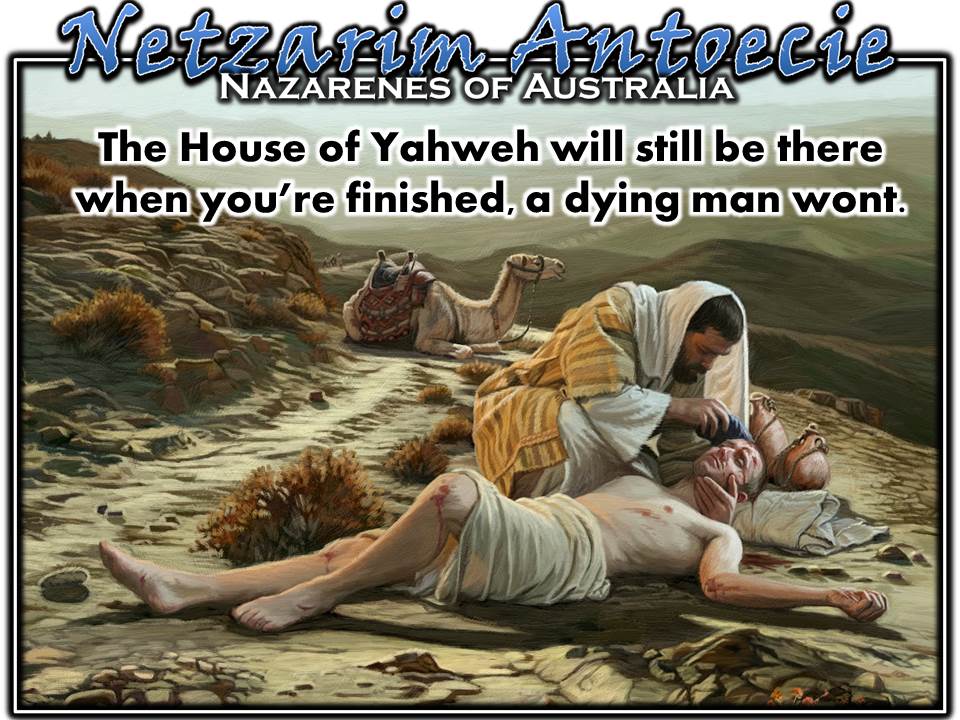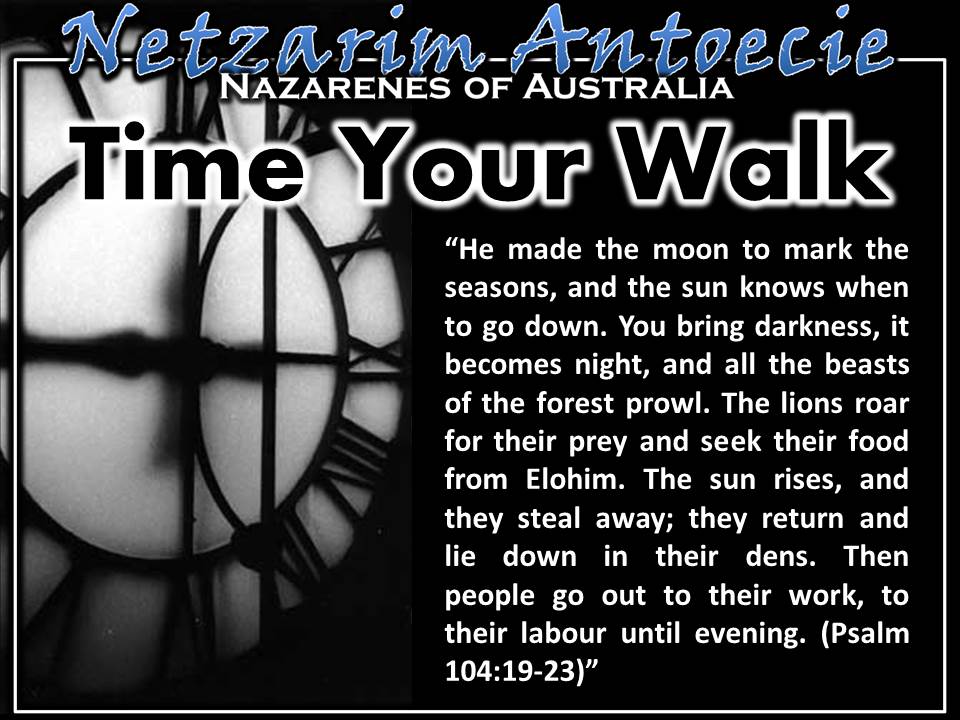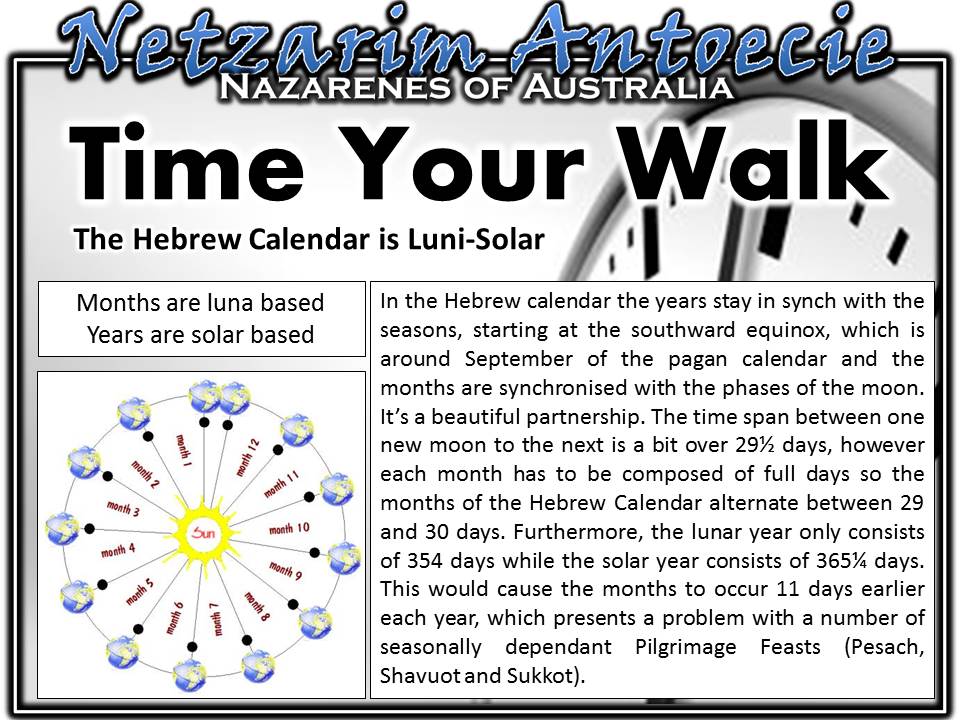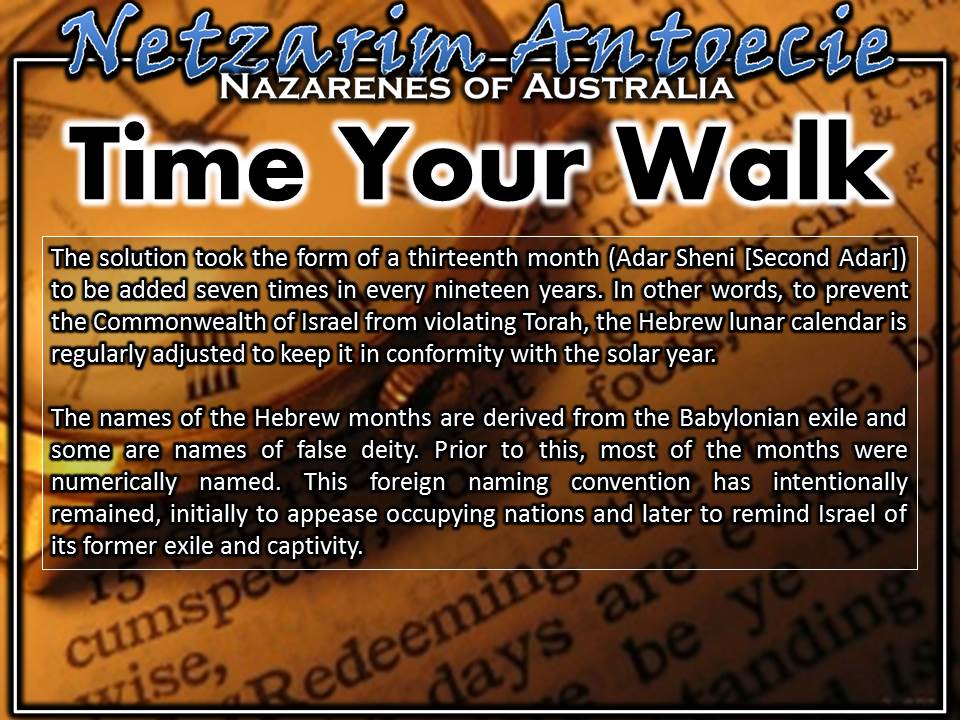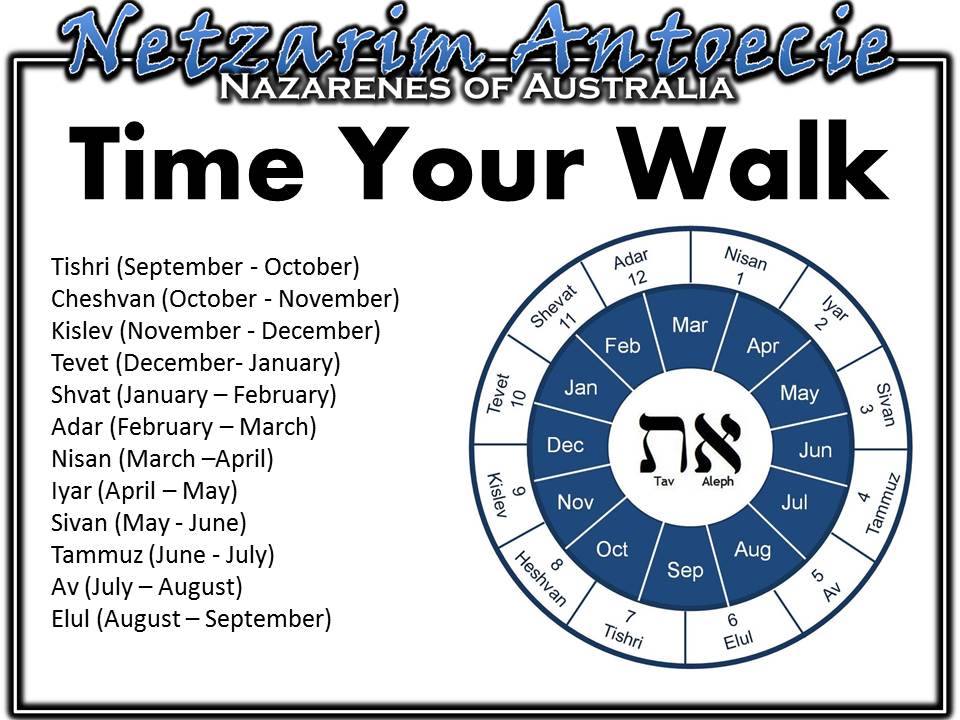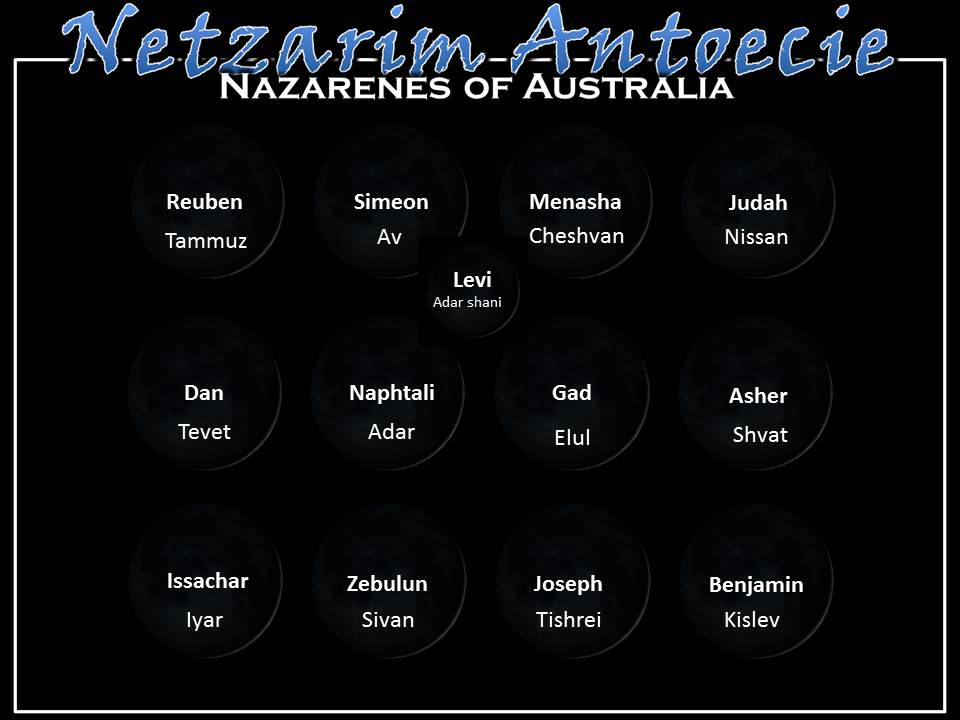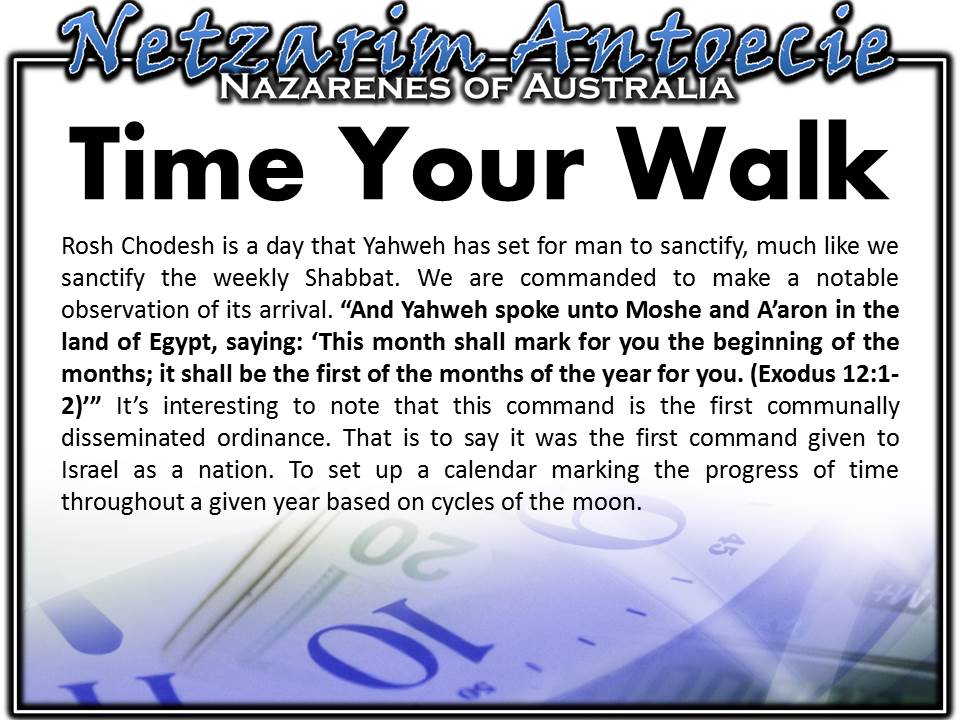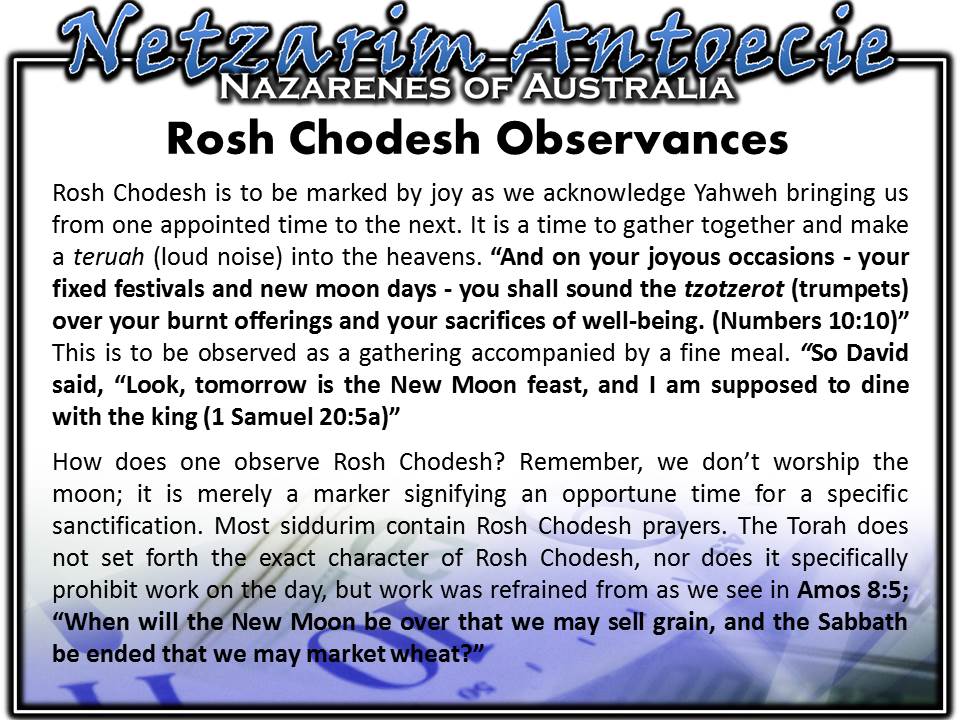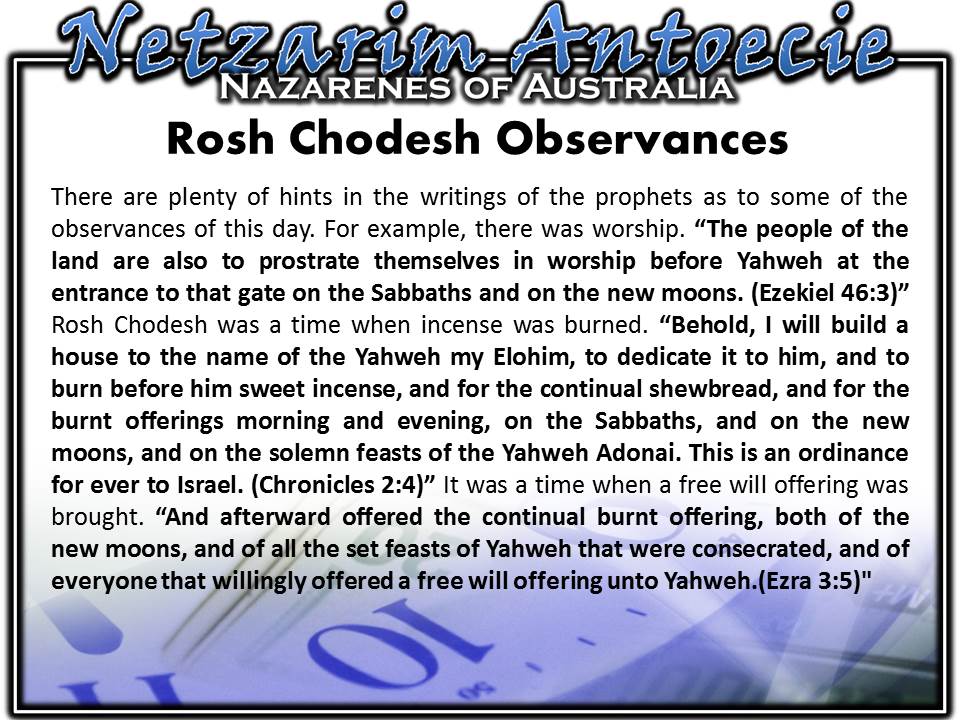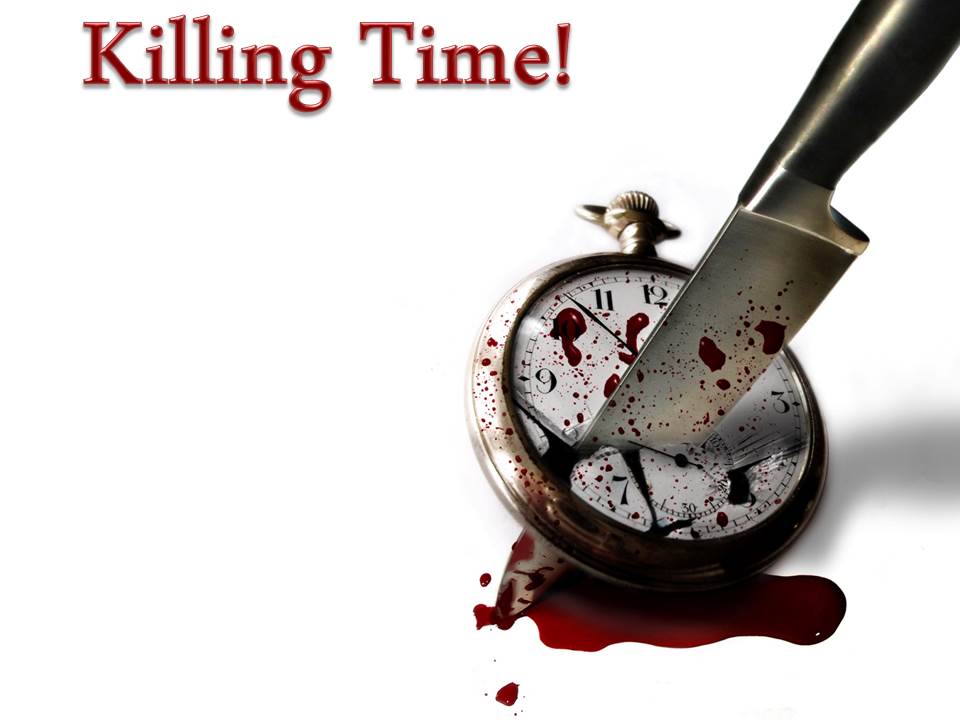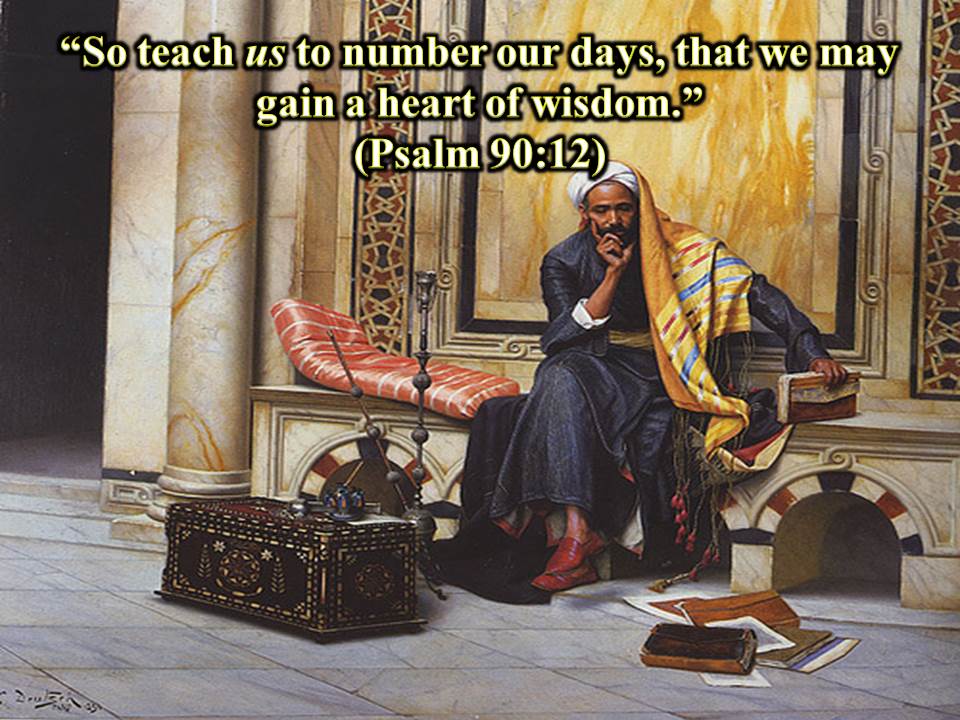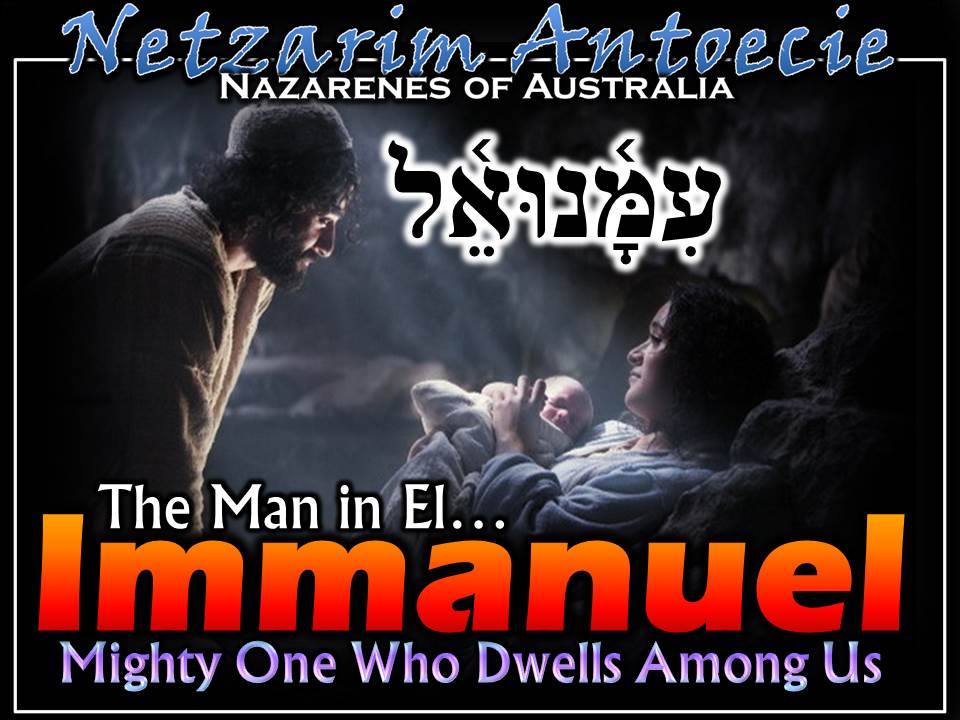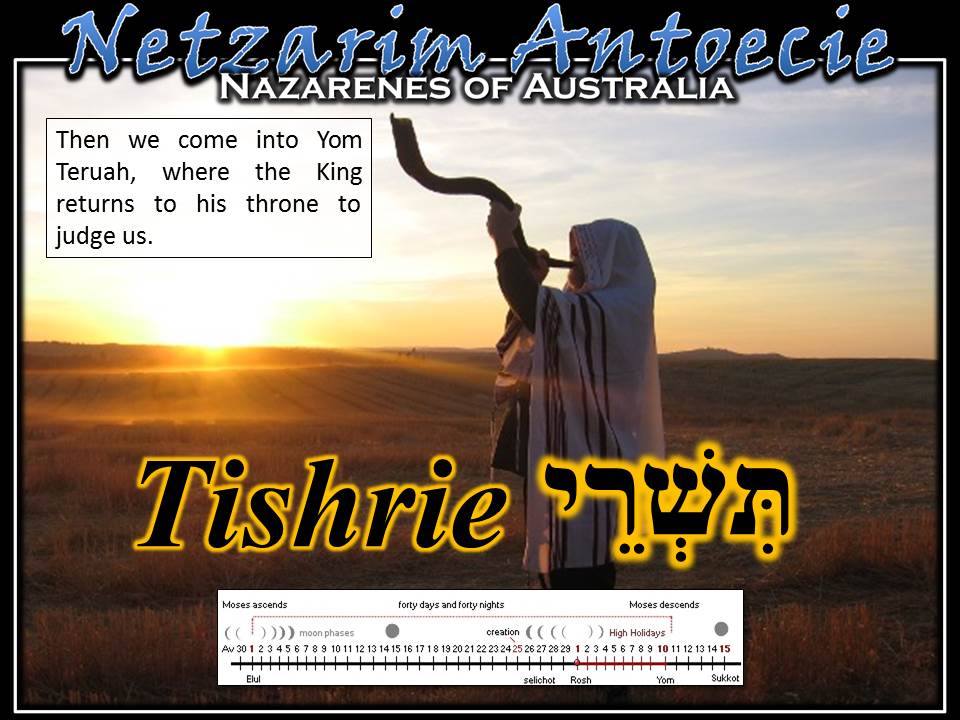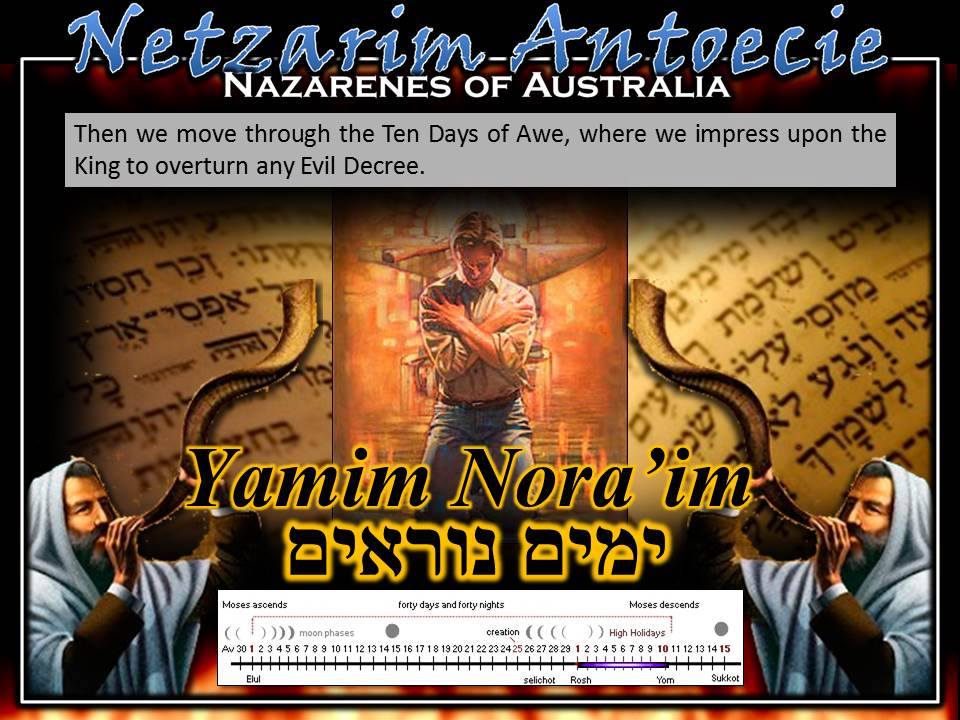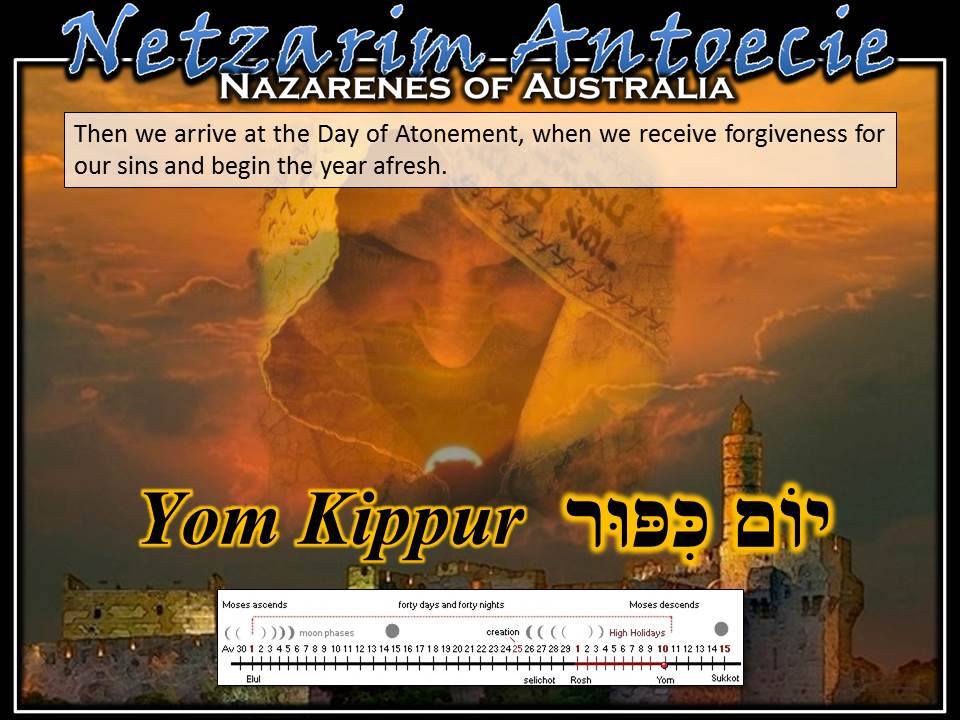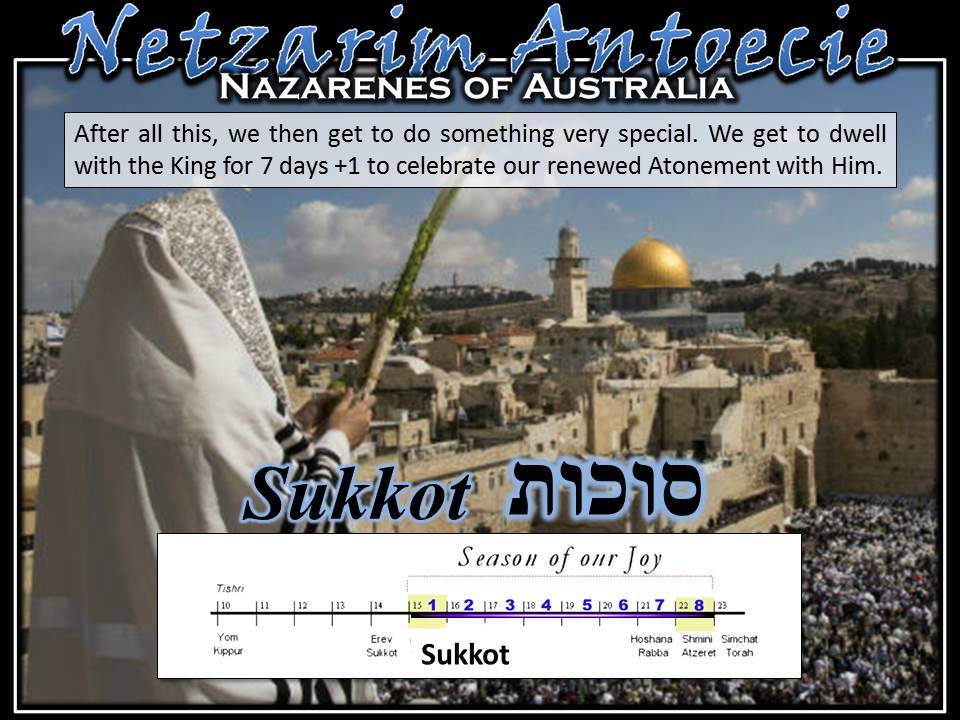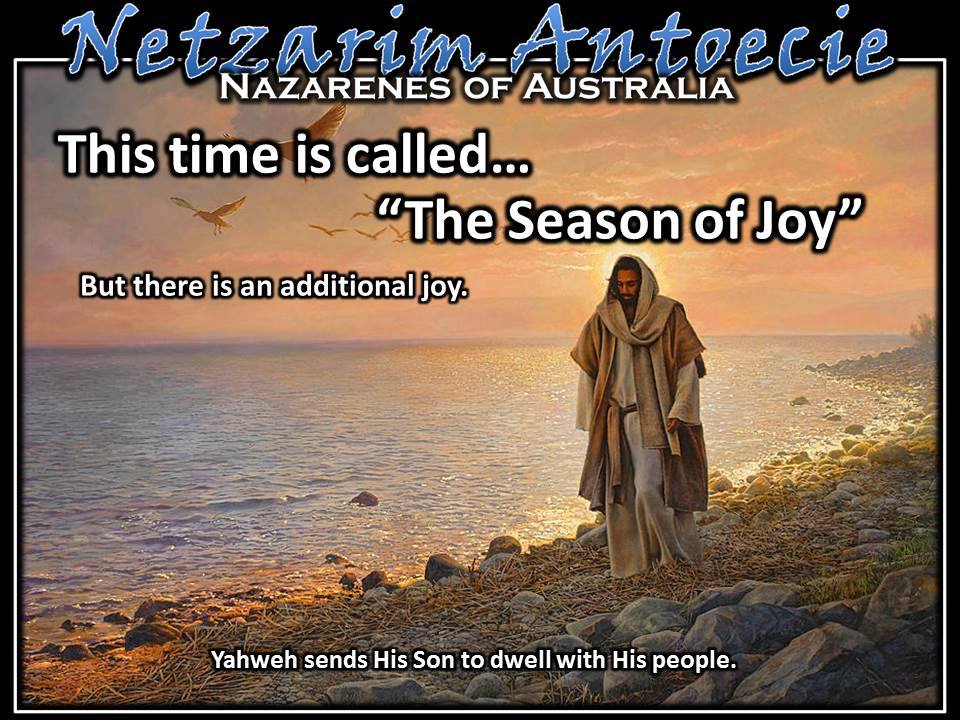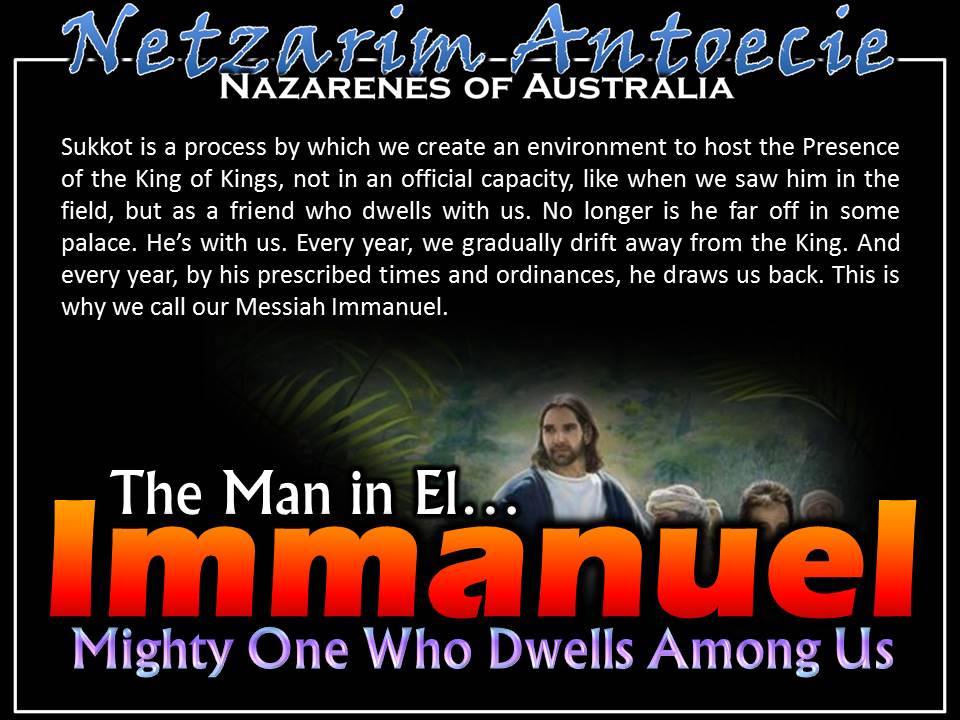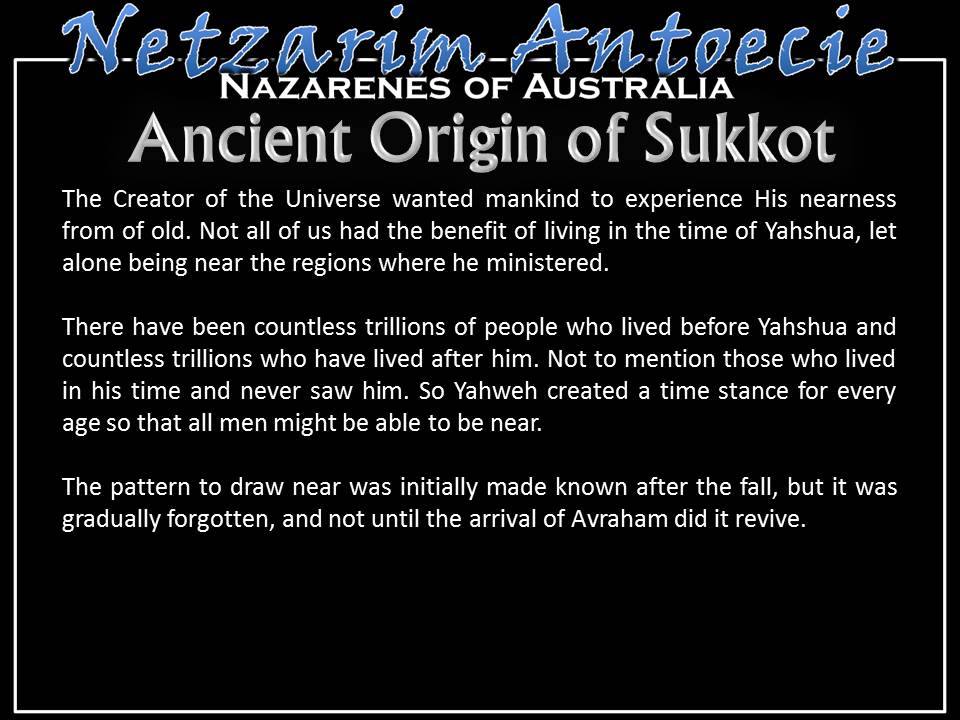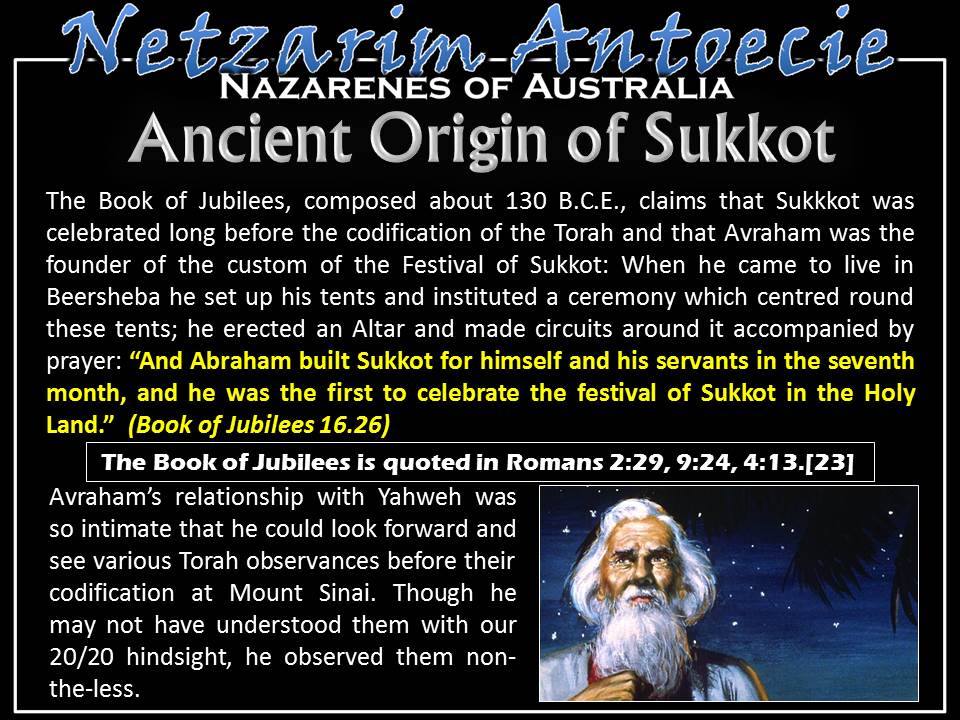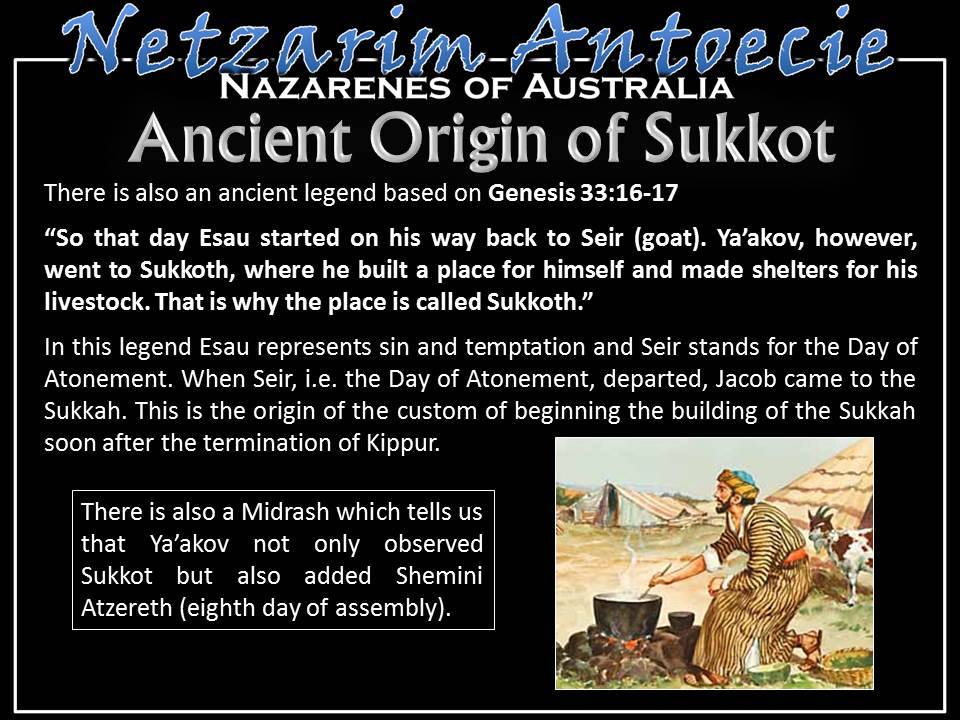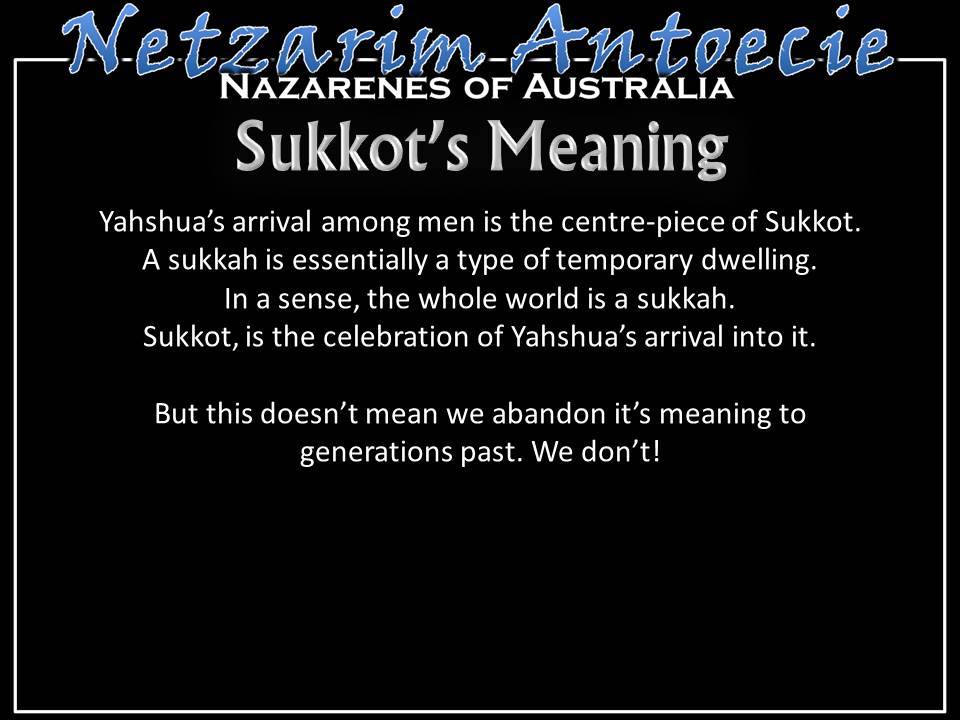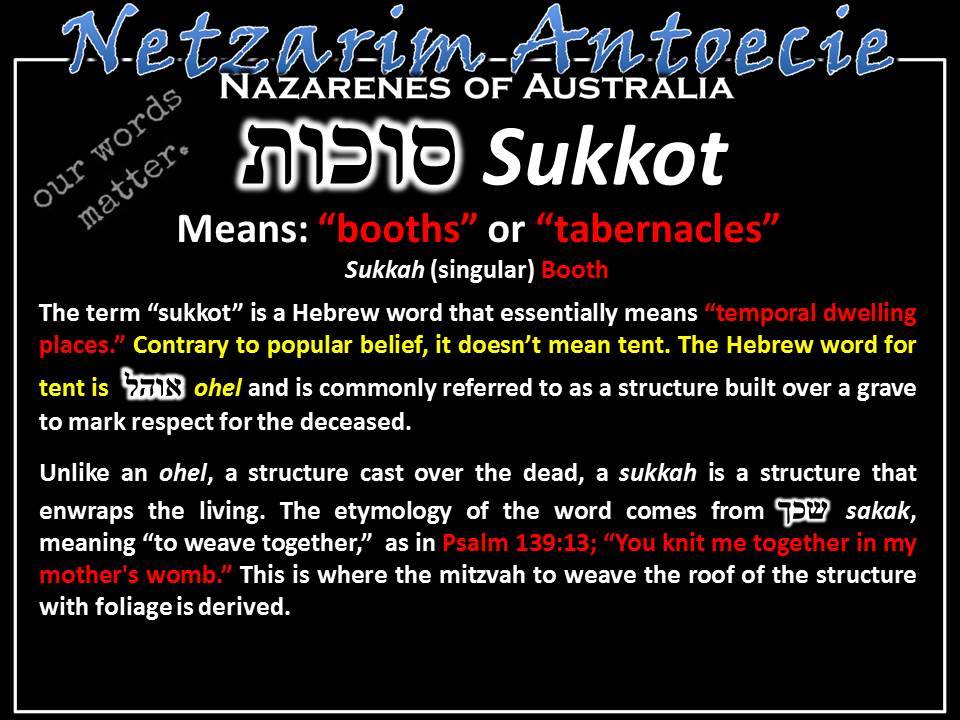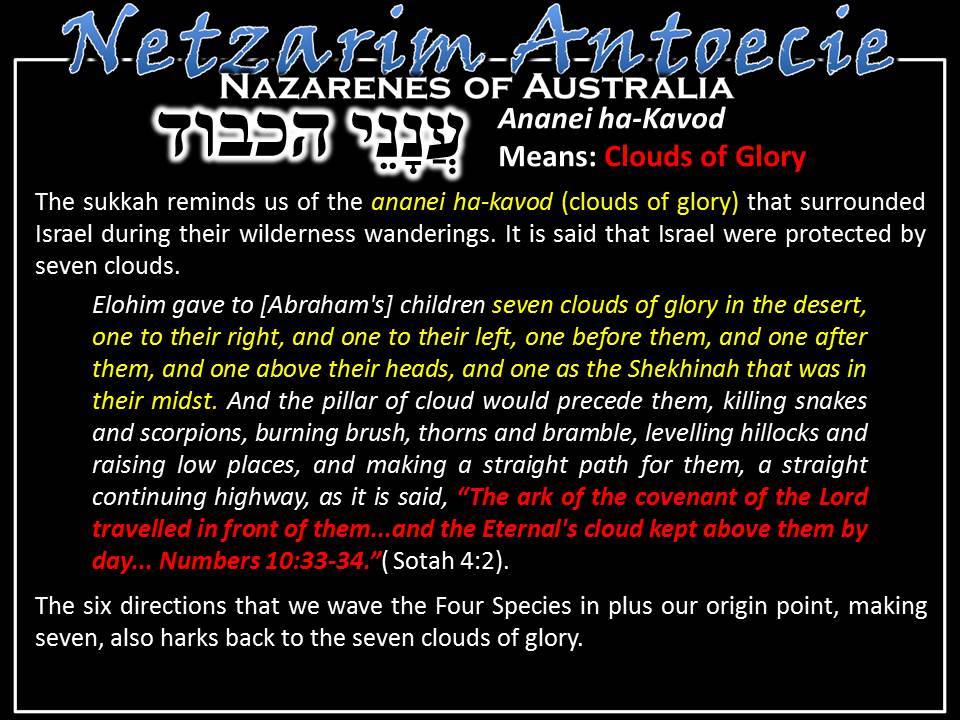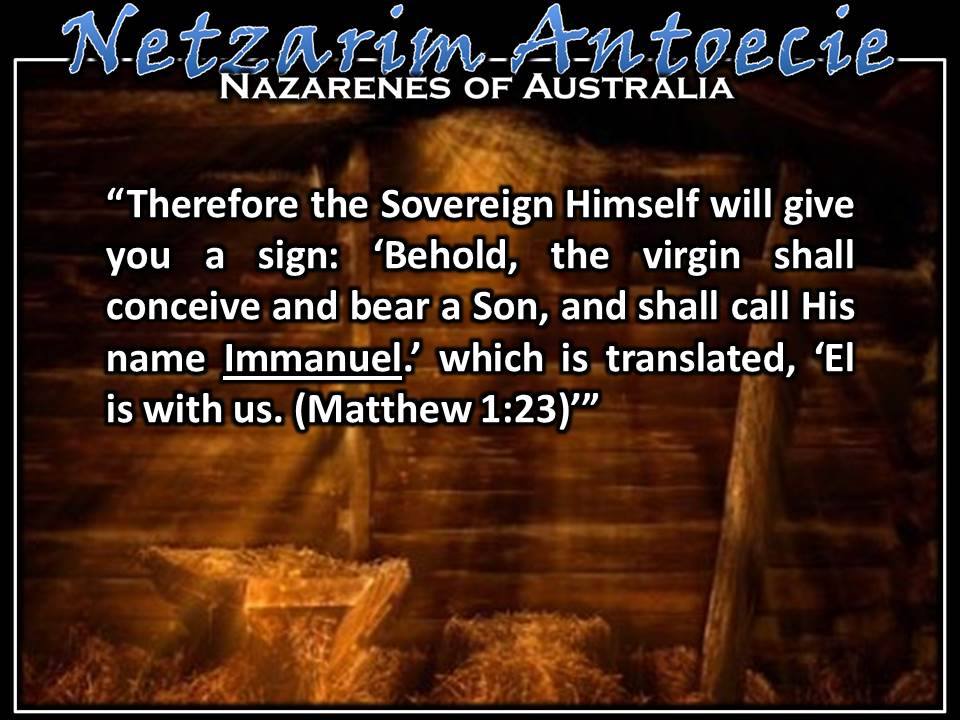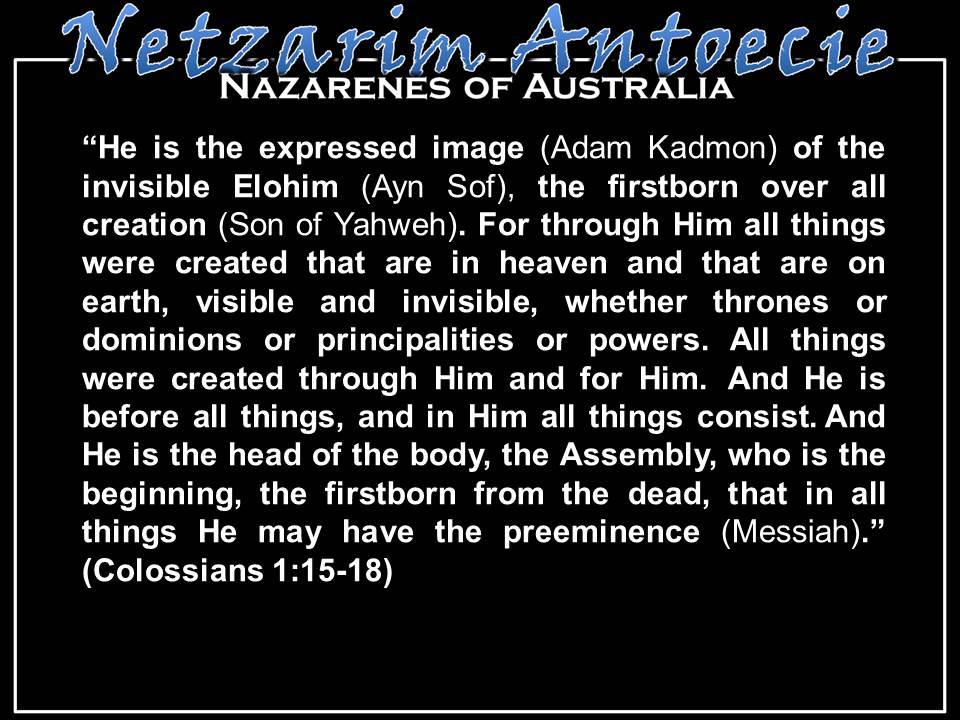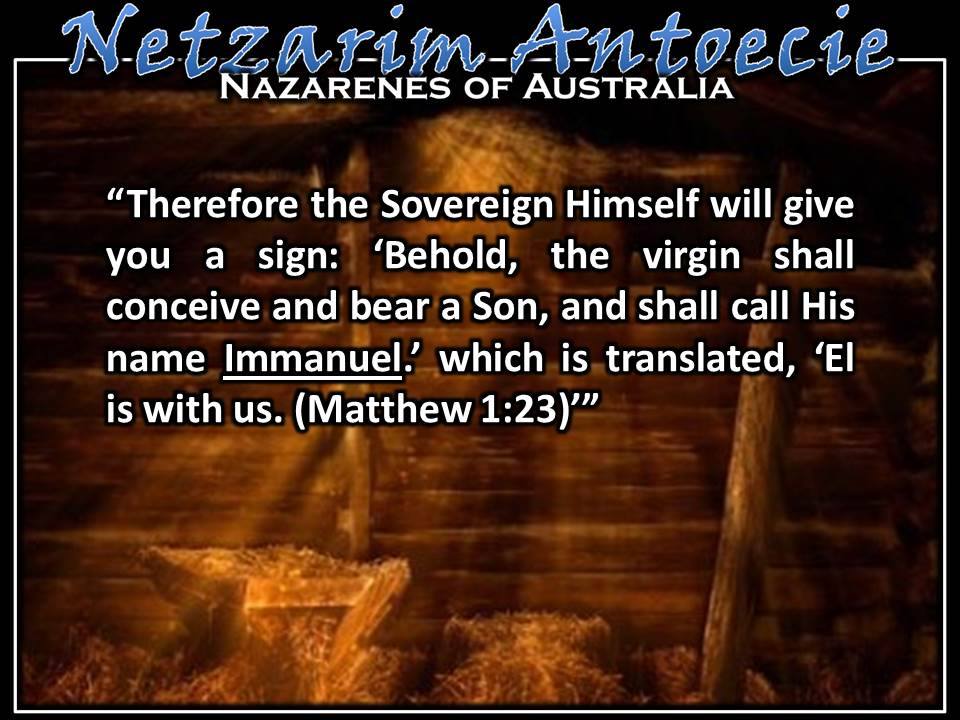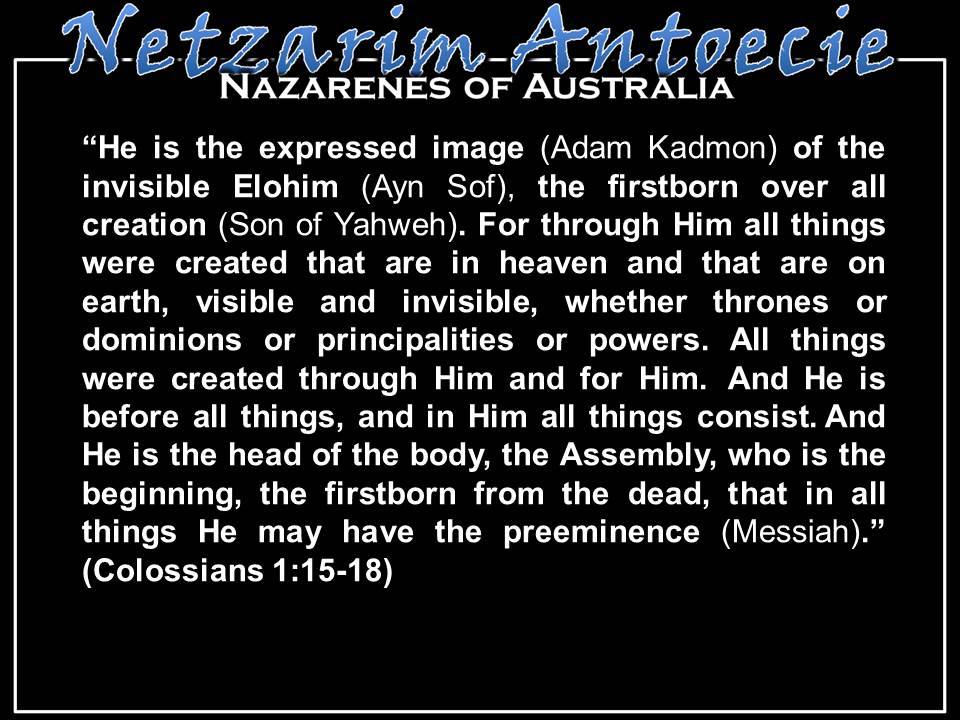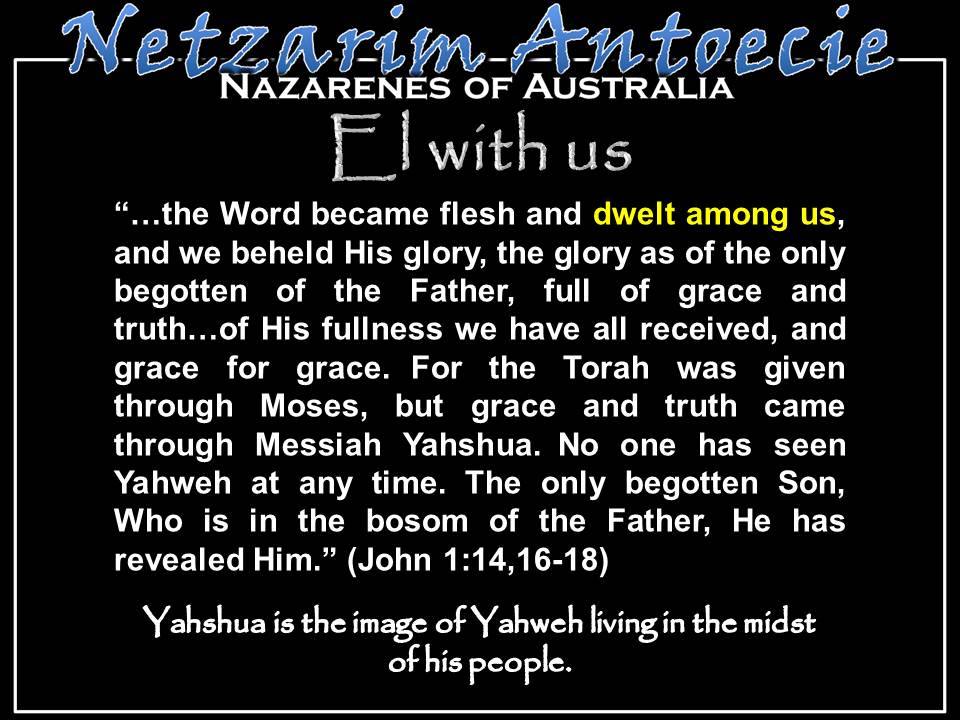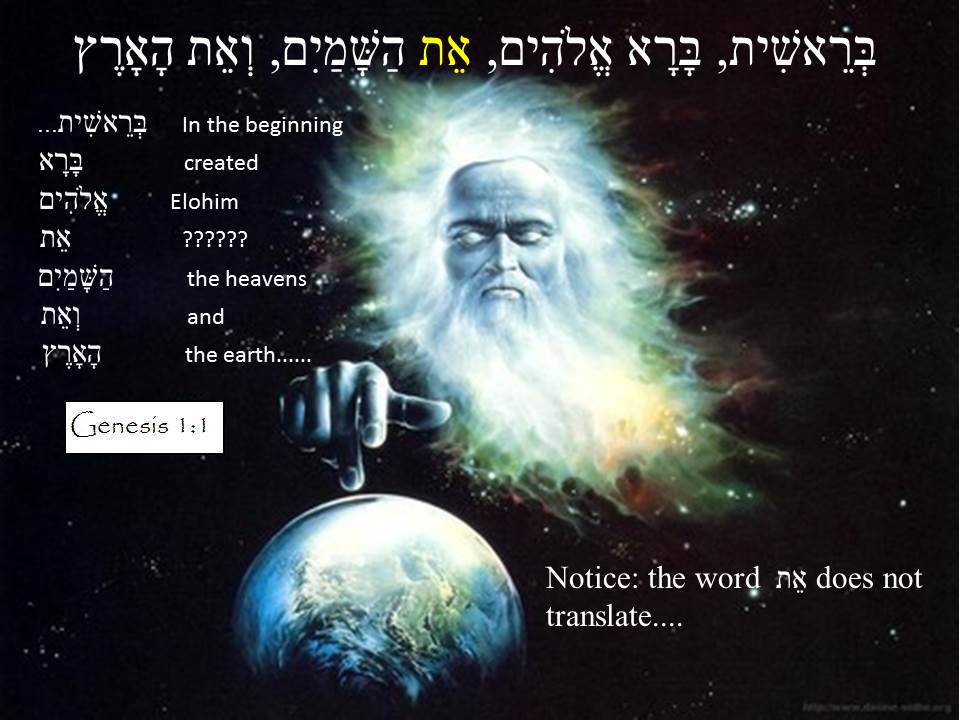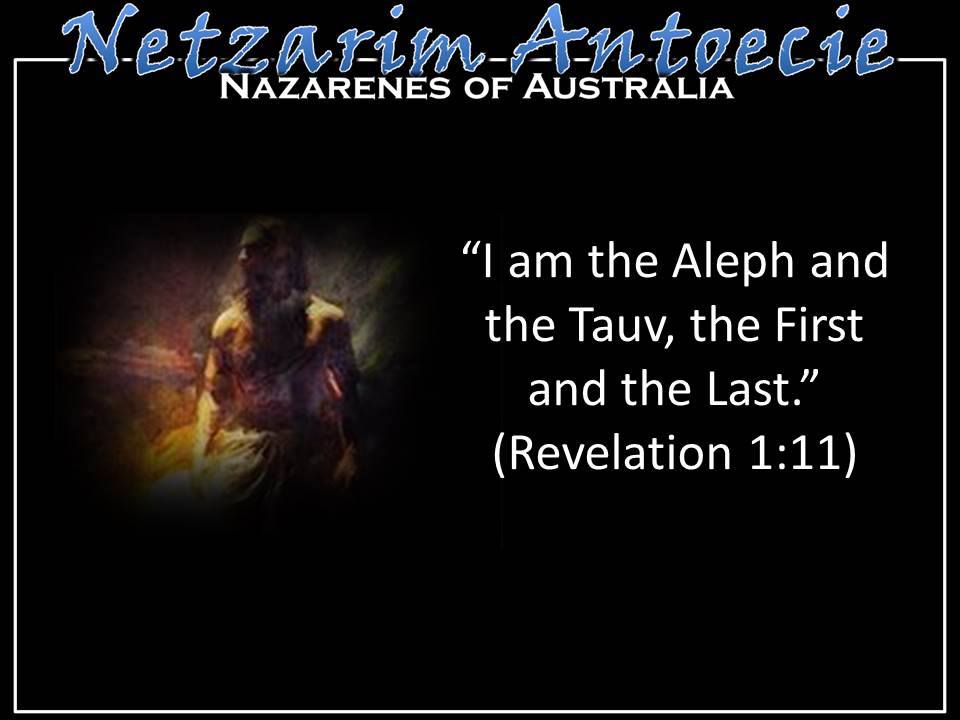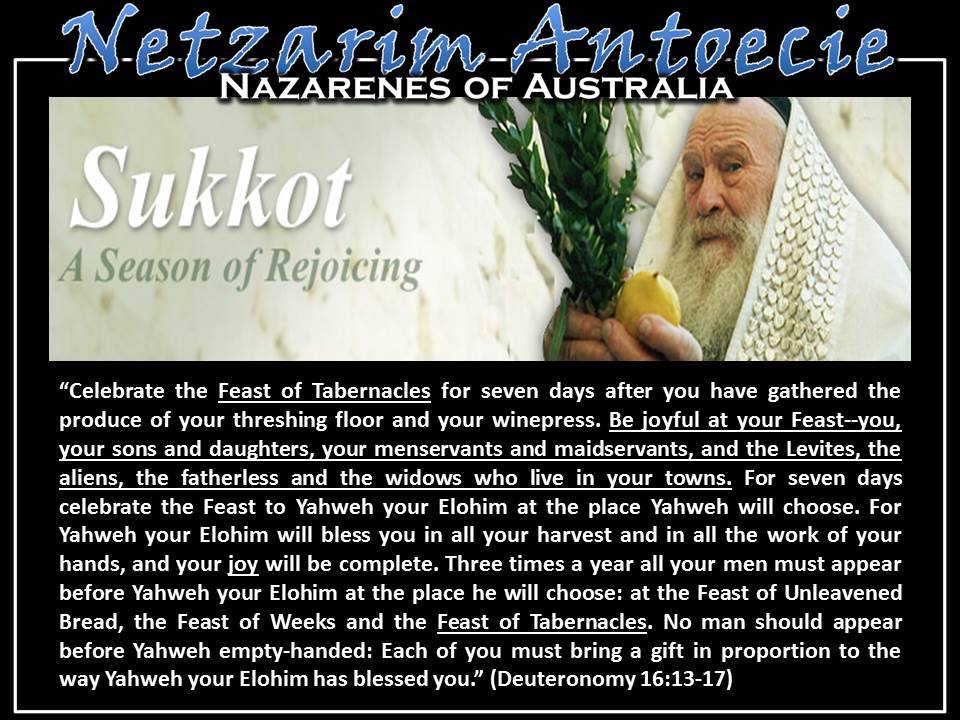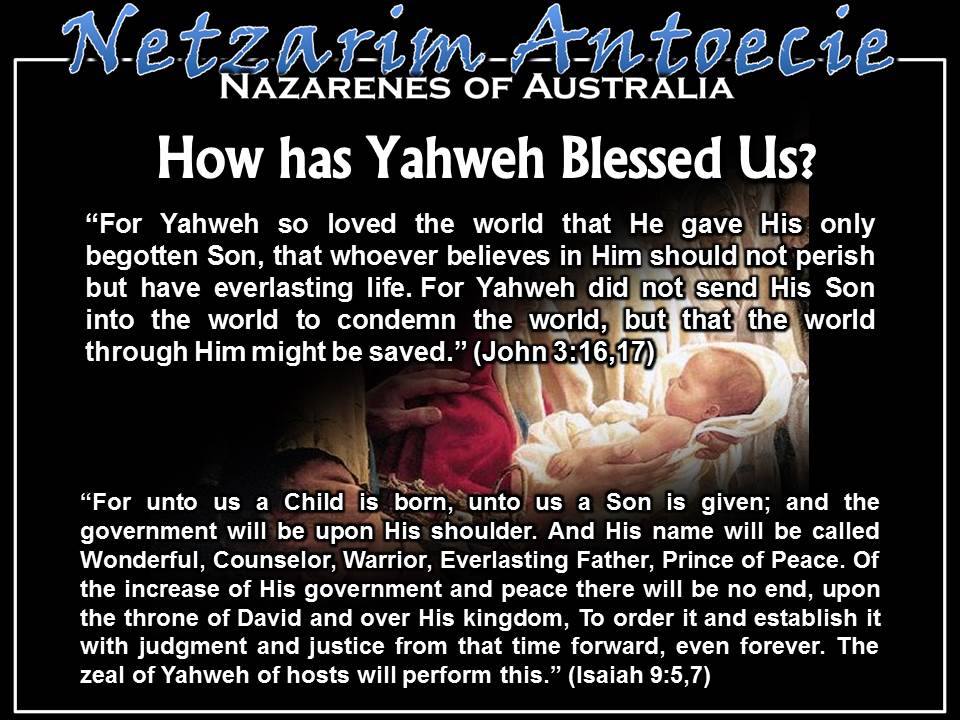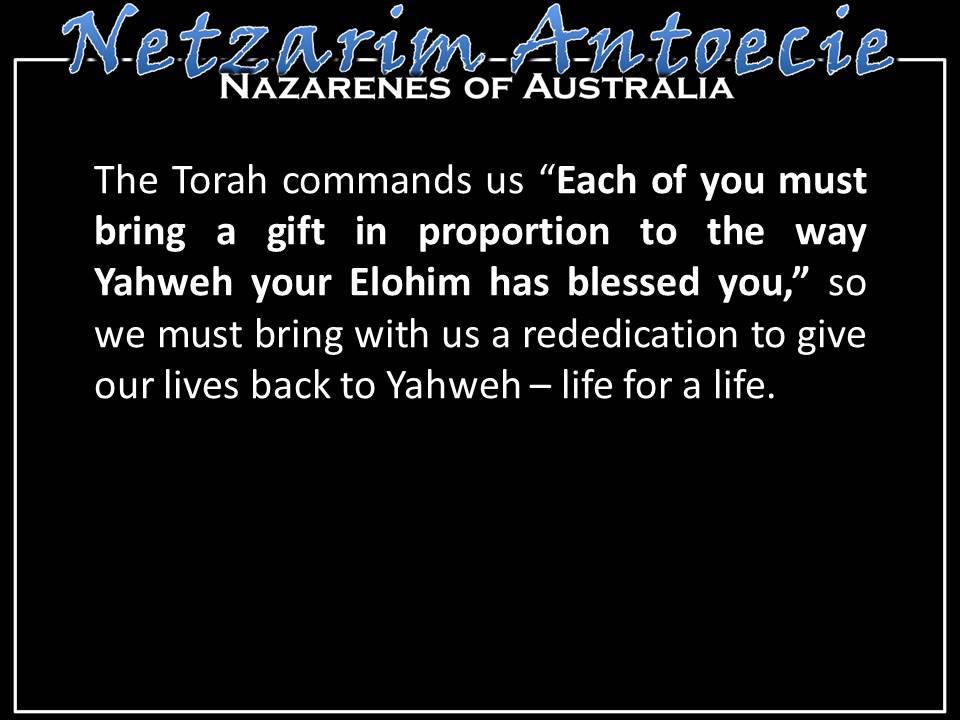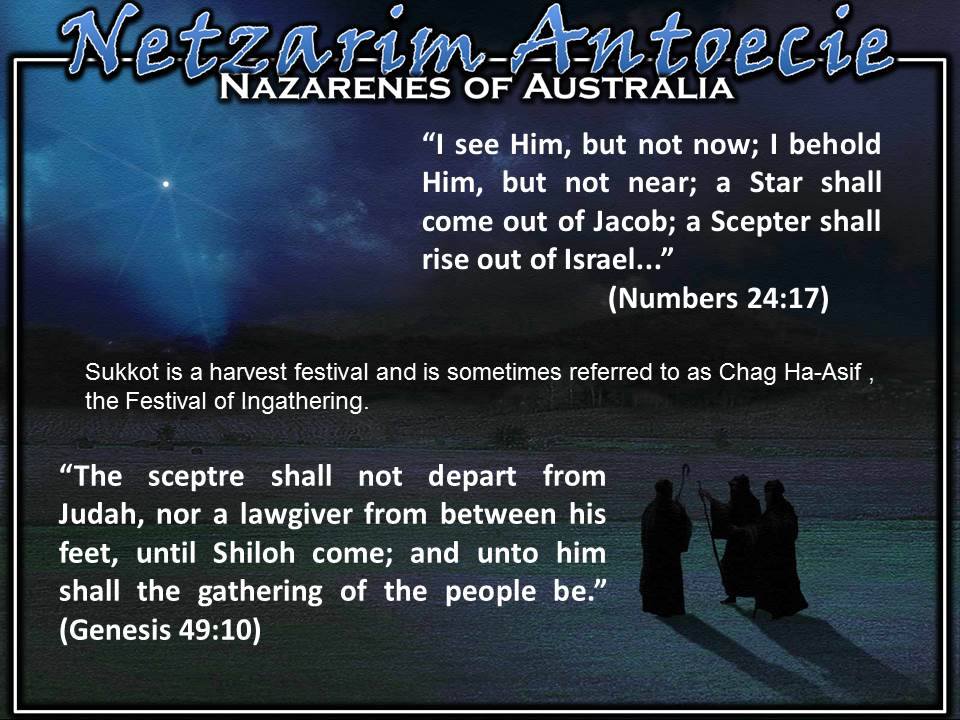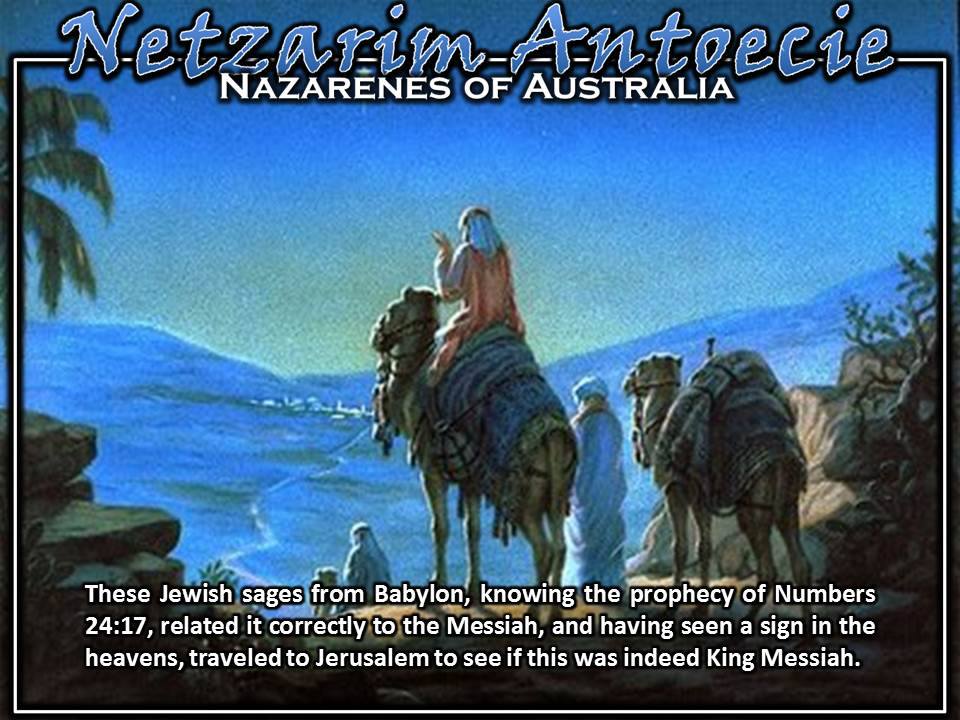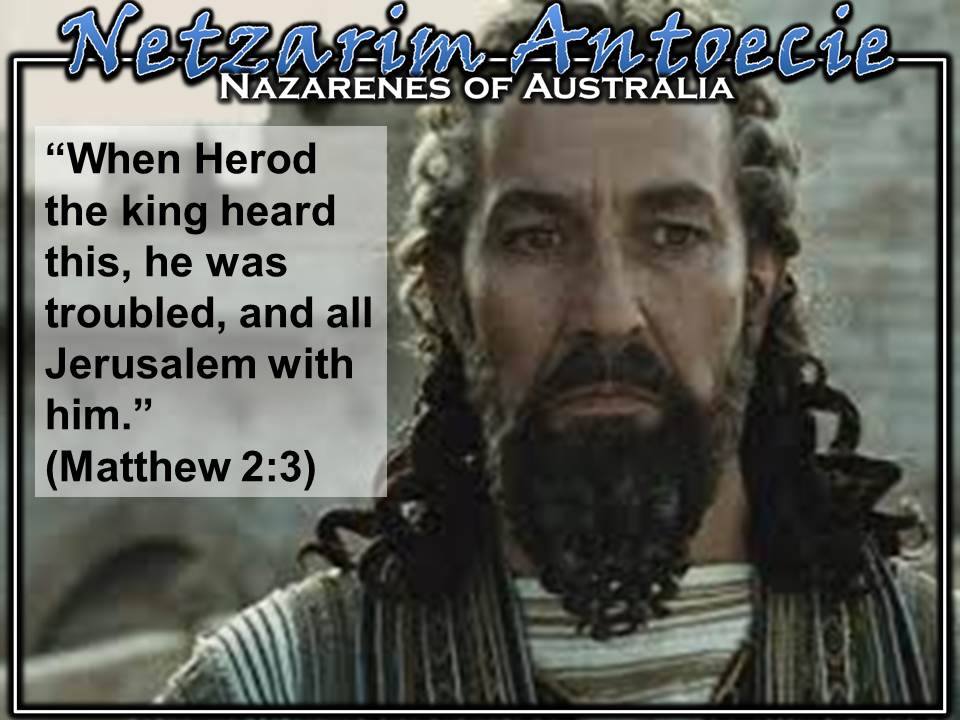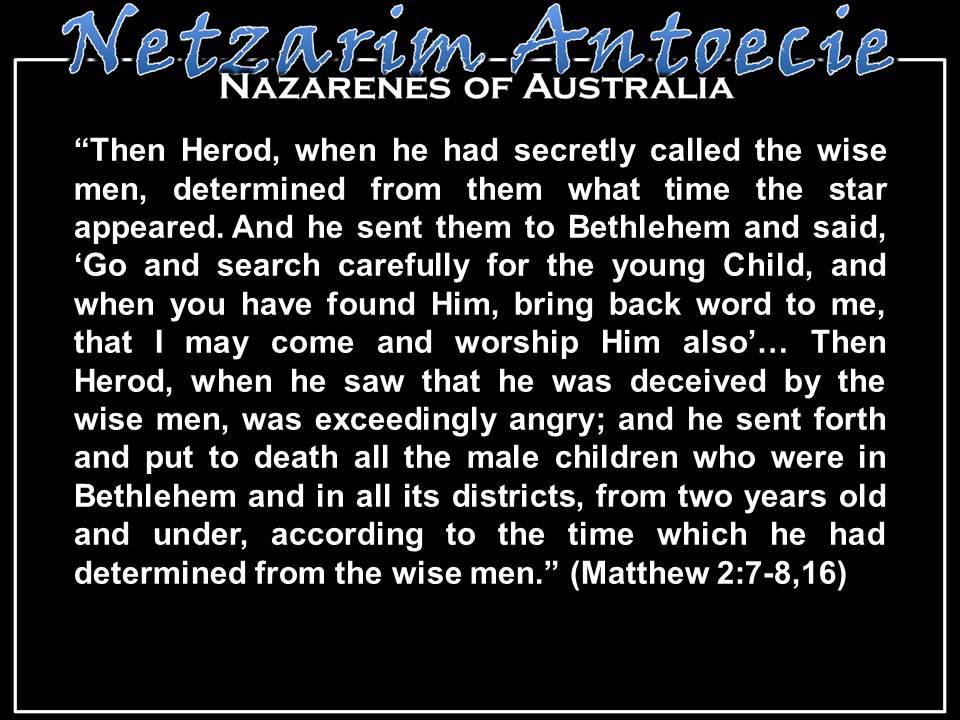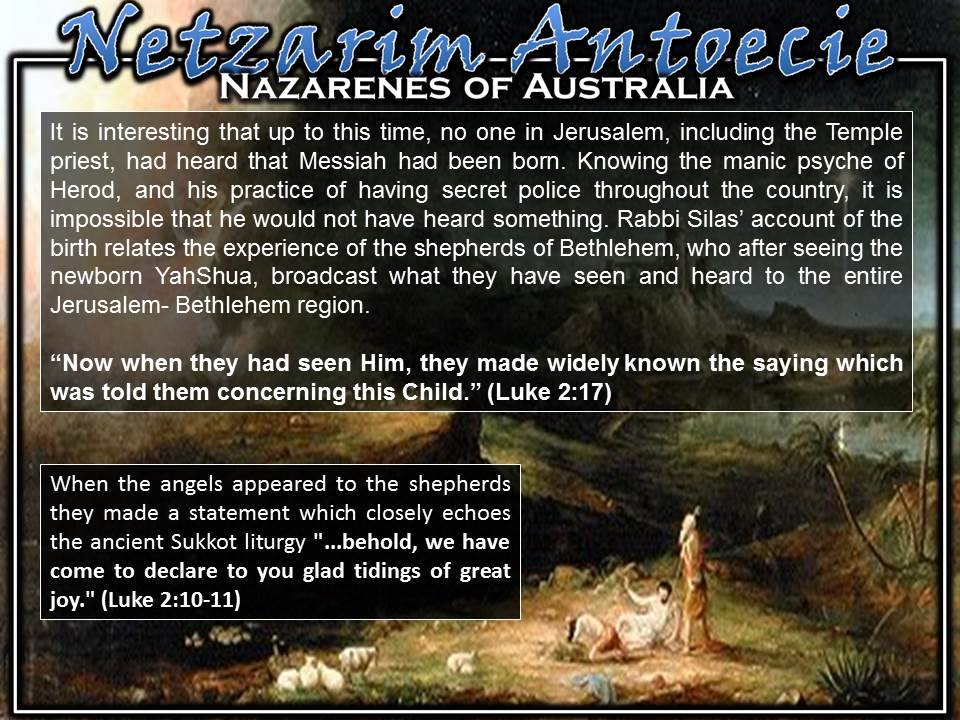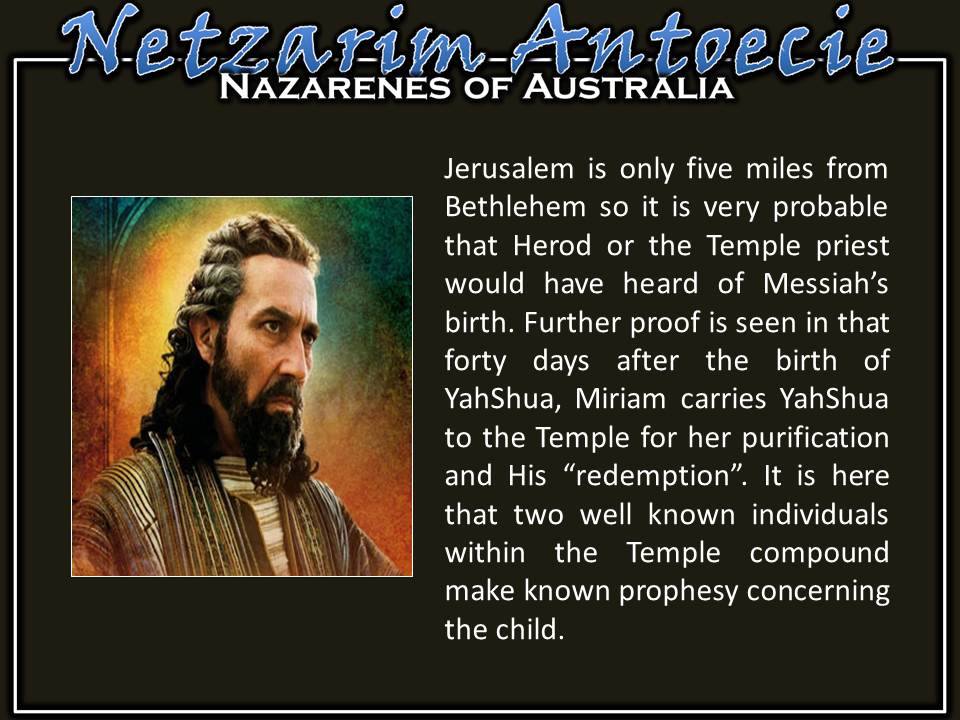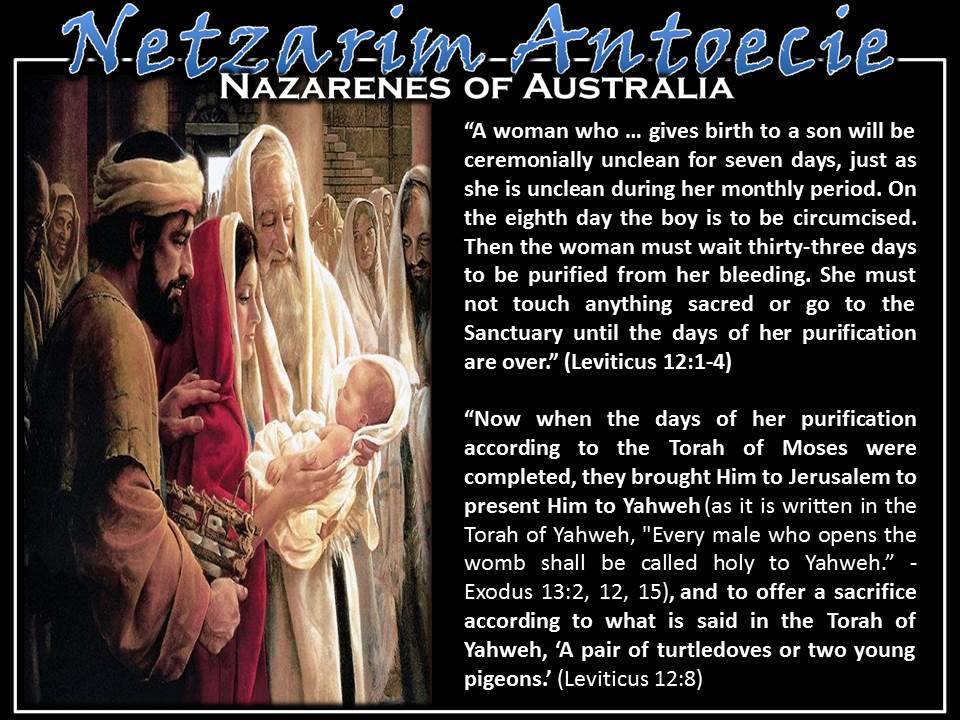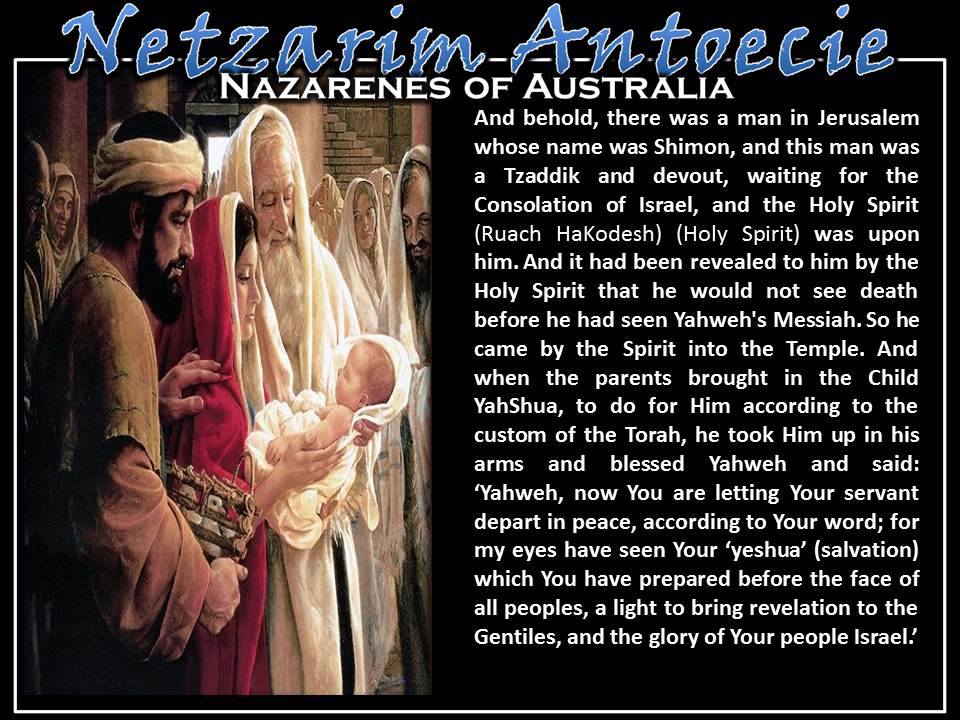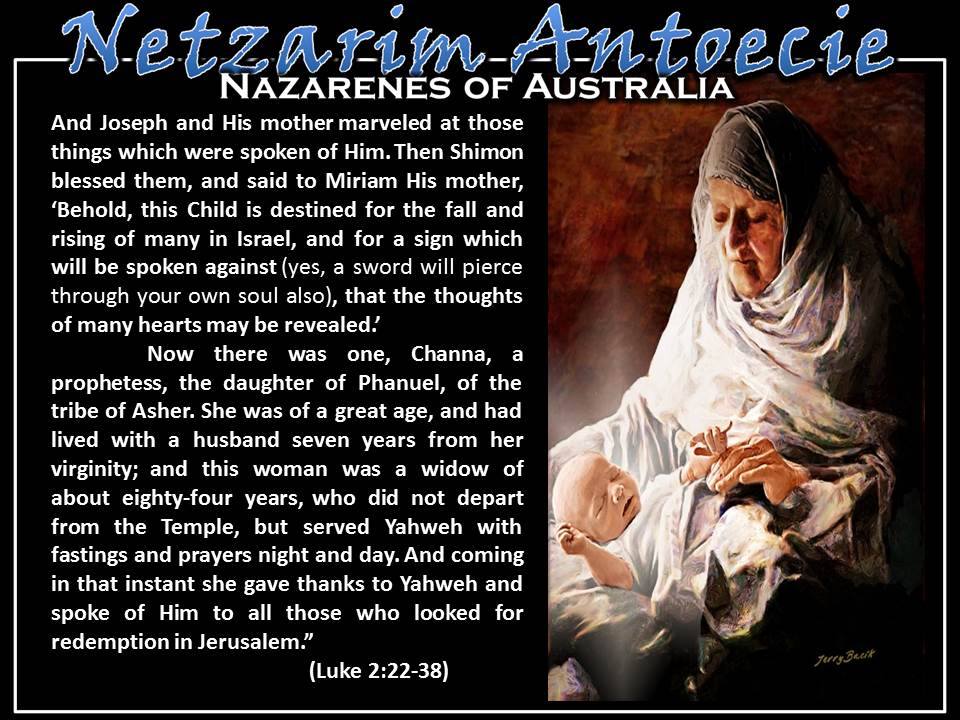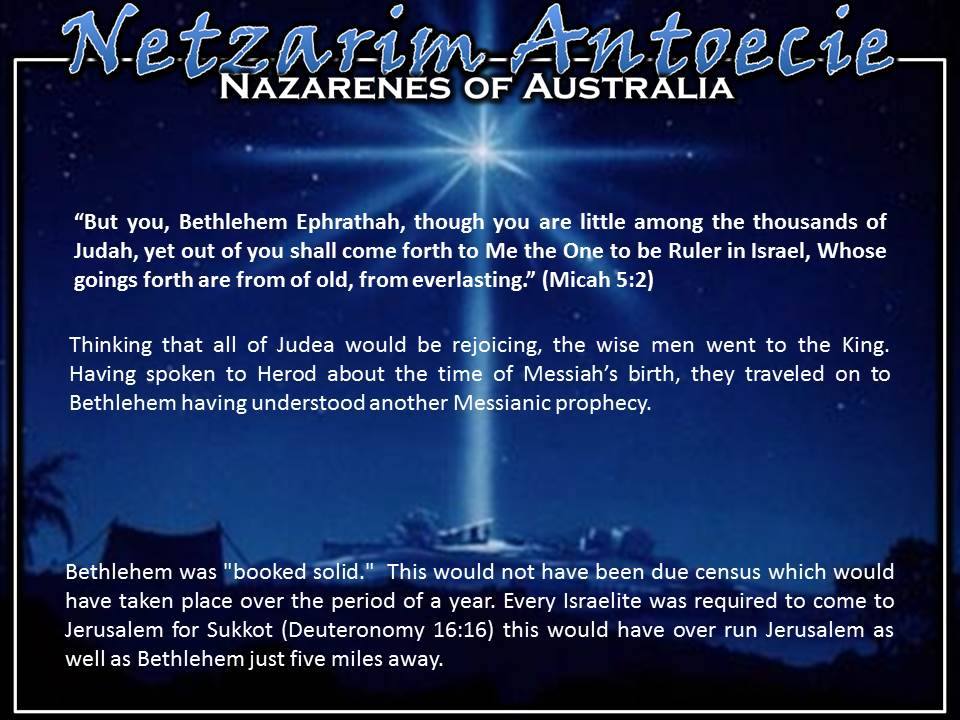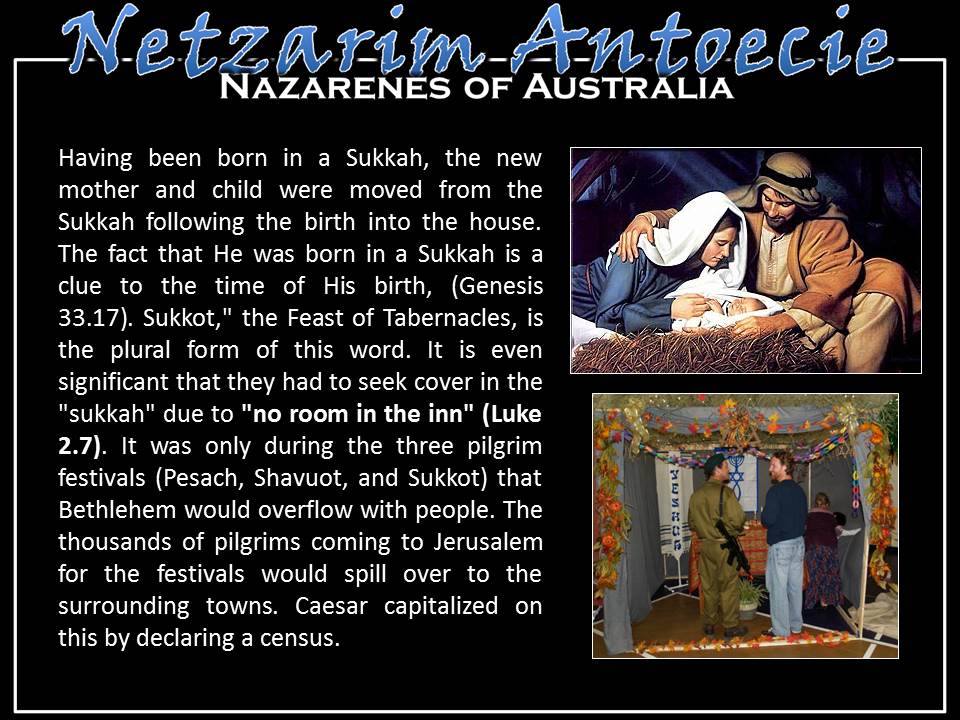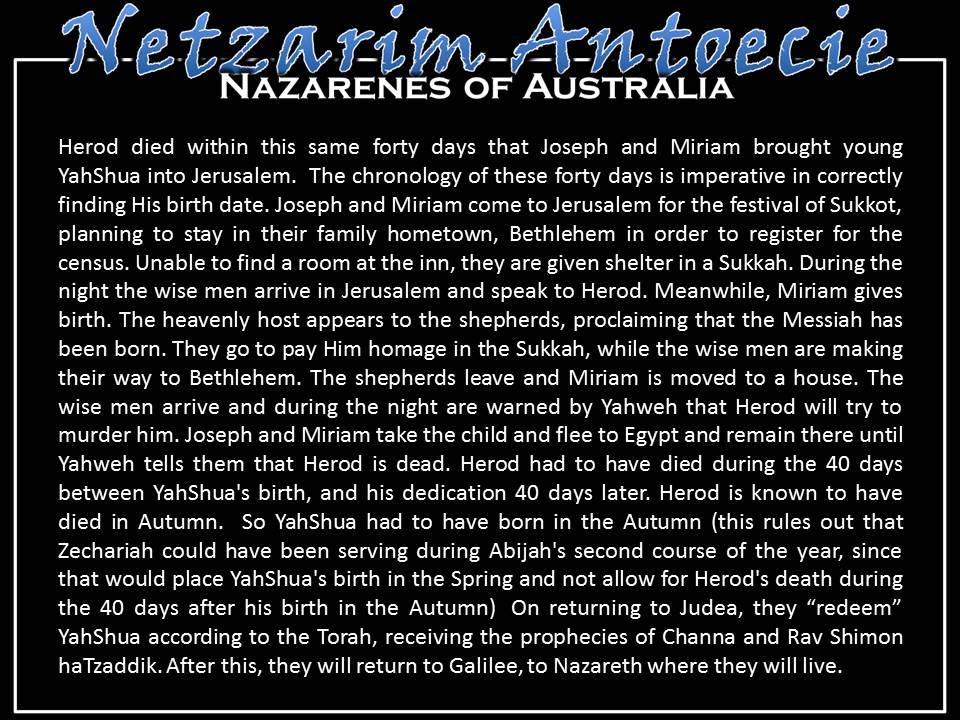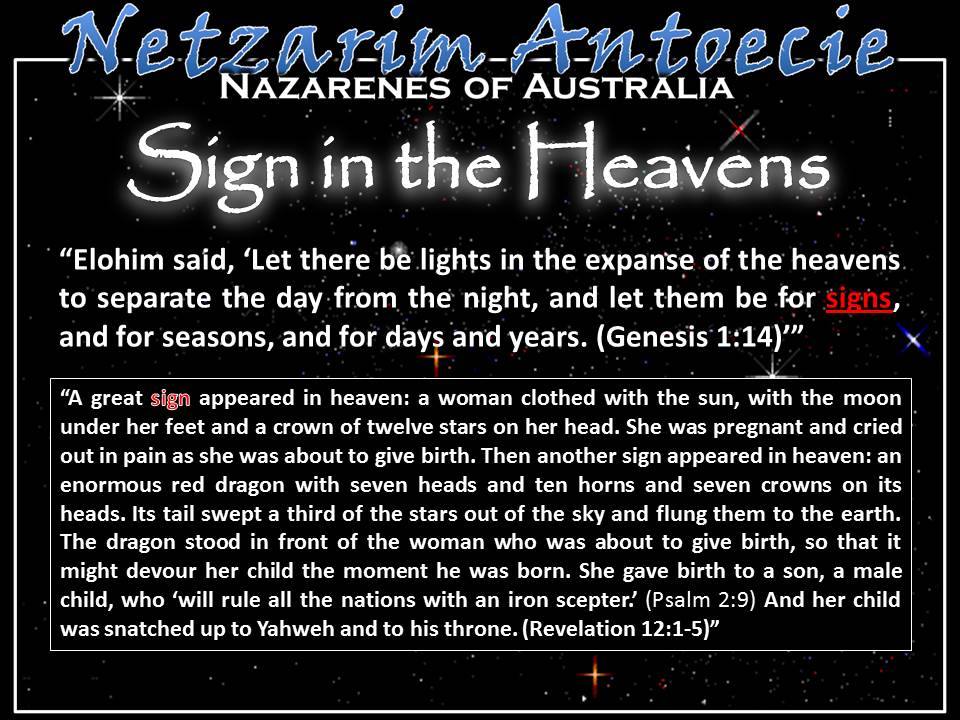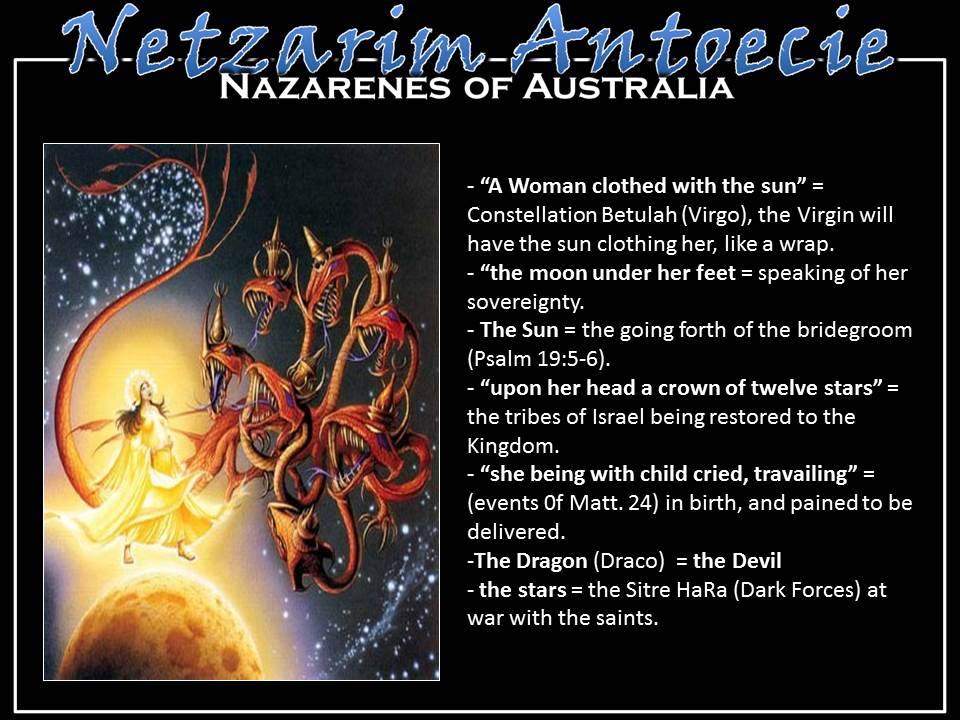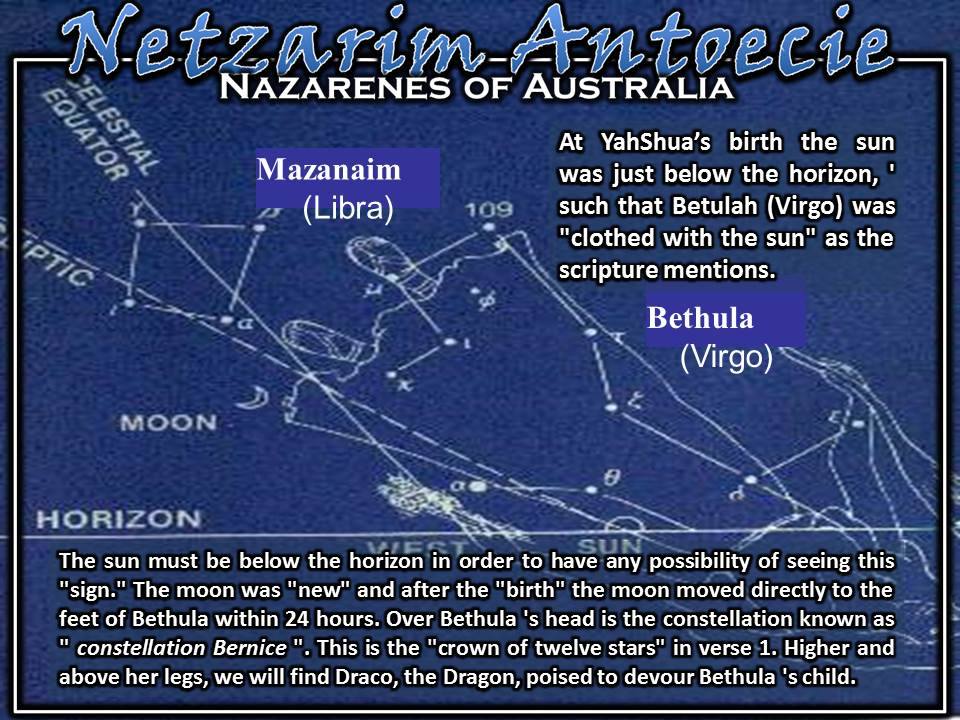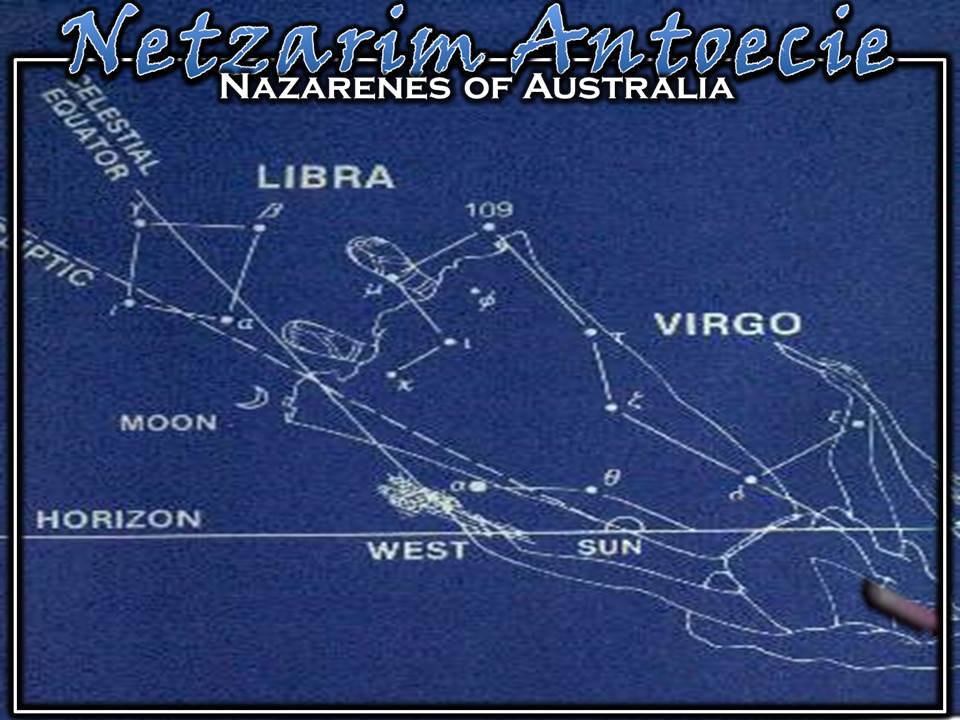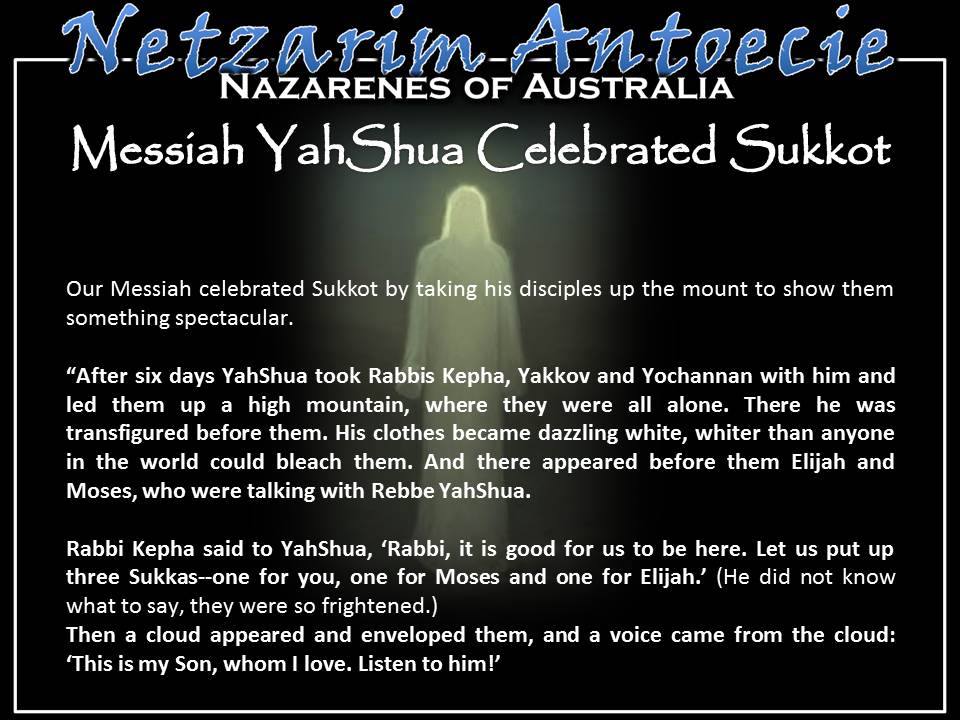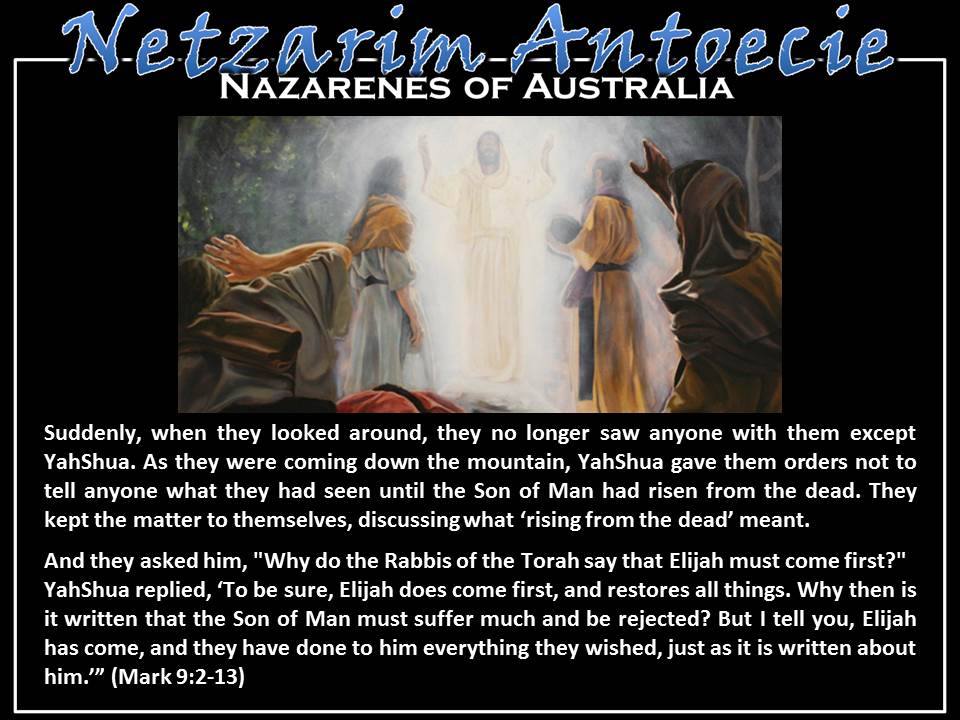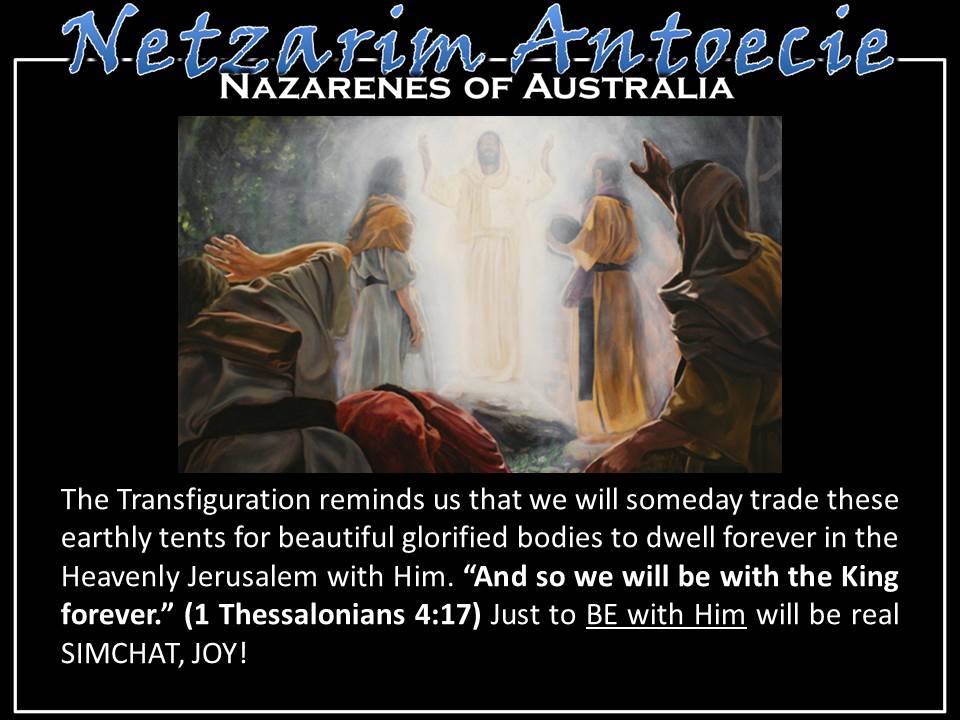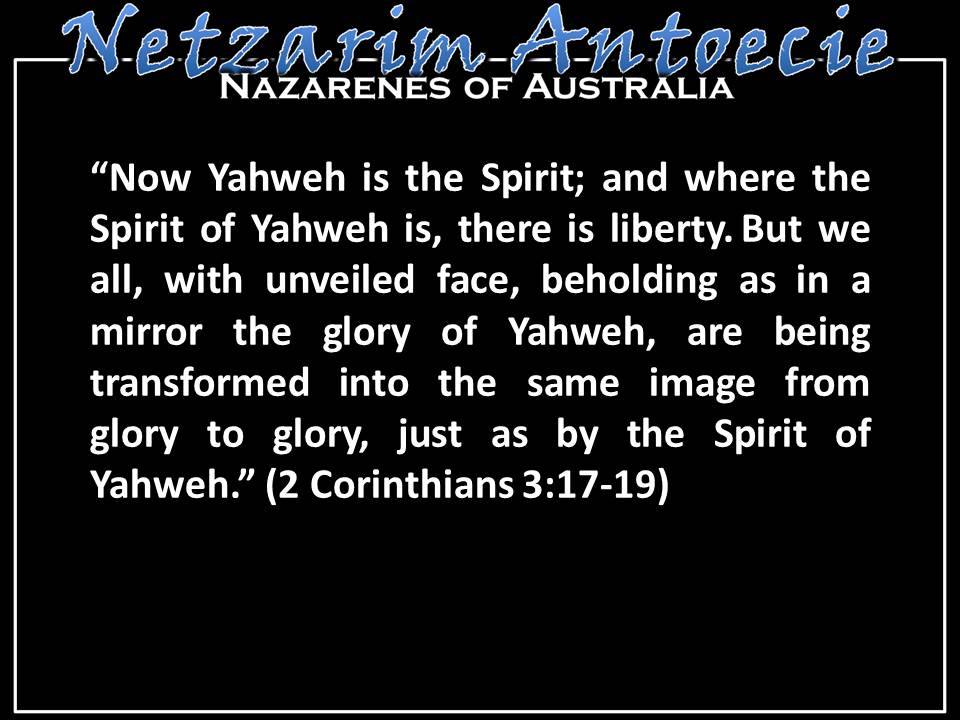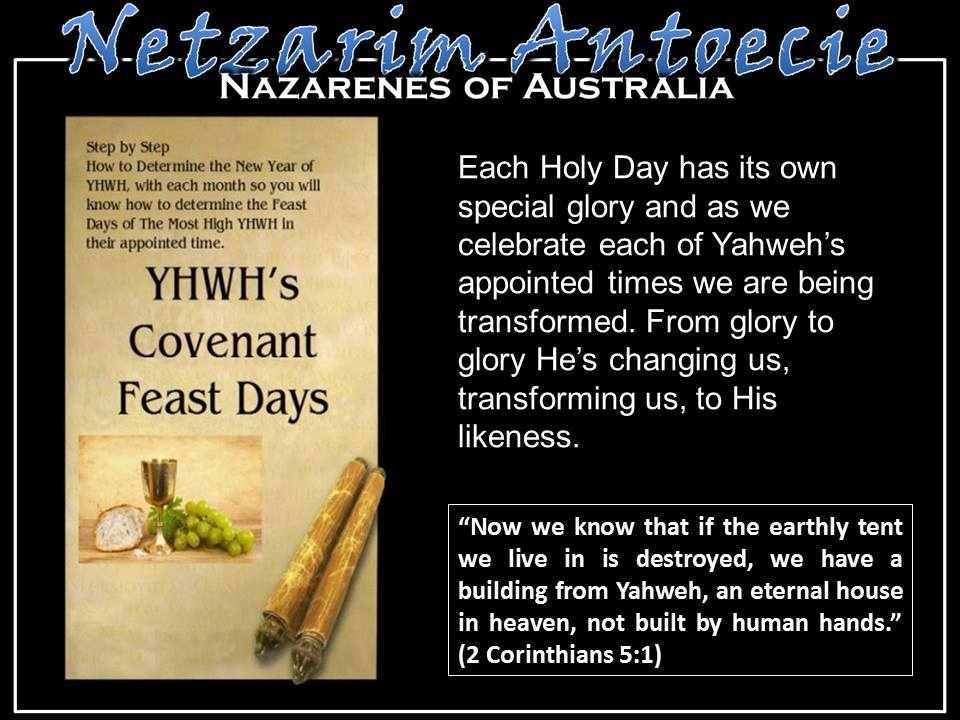New Moon, New Month, New Opinion
Rosh Chodesh Teaching
Part 2 of Time Your Walk
(Intro Slide)
The Serious Nature of Time
(Slide) In our previous teaching on Rosh Chodesh, we found out that the Almighty takes time very seriously. One only has to look at Scripture itself to see this as the Torah opens with the words “In the beginning,” and then segments the process of creation within a deliberate timeframe. Even the Talmud, man’s most authoritative Divine response to the Torah itself, starts with the question, “From what time may one recite the evening Shema?” The idea of sanctified time is one of the foundations of our faith. It sets the timing and pace of our walk, enabling the finite to stay anchored to the infinite in season and out of season.
The Forgotten Command
(Slide) So it’s somewhat ironic that the first nationally disseminated command, a time dependant command, heard in the ears of the whole nation of Israel has become the most neglected and yet one of the most debated over commands in all of Scripture. It is the Celebration of the New Hebrew Month, the moed (the appointed time) of Rosh Chodesh (the head of the month), which is reckoned by the cycle of the moon. “And Yahweh spoke to Moshe and A’aron in the land of Egypt, saying: ‘This month shall mark for you the beginning of the months; it shall be the first of the months of the year for you. (Exodus 12:1-2)’”
The Command to Disagree
(Slide) The topical nature of this Festival is not new. Indeed Rav Sha’ul addresses it as a point of debate in his day. “Let no man therefore condemn you…in respect of a holy day, or of the new moon, or of the Sabbath: Which are a shadow of things to come, but the body that casts it belongs to Moshiach. (Colossians 2:16-17)” So disagreements, often leading to condemnation and sectarianism, over the observance of holy days and other forms of observance within the faith is an ancient phenomenon. But there is a healthy and unhealthy way to sift for the truth. The two chief schools of Torah learning, Hillel and Shammai, are presented in constant opposition to one another. (Slide) Many times Yahshua’s audience asked him questions to see which school he agreed with. Disagreement, debate and resolution is a Torah practice. This is why the Talmud (Eruvin 13b) says: “A heavenly voice declared: "The words of both schools are the words of the living Elohim, but the law follows the rulings of the school of Hillel.” (Slide) This is why Yahweh allowed the continued existence of both the Pharisees and the Sadducees, two major sects of second century Judaism that were locked in constant disagreement. Disagreement generates discussion, discussion generates learning and learning generates growth. “Learn to do right; seek justice. Defend the oppressed. Take up the cause of the fatherless; plead the case of the widow. "Come now, let us reason together," says Yahweh. (Isaiah 1:17-18a)”
The War on Time
(Slide) The Sitra Ahurah, the Dark Forces, seek to attack time, by misdirecting, manipulating and confusing it. An army that does not know when to march, camp, or ready itself for battle is ineffective. Sure, most of us are familiar with Mystery Babylon’s move to supplant holidays “He will speak against the Most High and oppress his holy people and try to change the set times and the laws. (Daniel 7:25)” While a successfully outward false portrayal of the original faith has its sweeping benefits, the enemy constantly sets out to sow discord within the body over the various observances we are commanded take on.
(Slide) Two high ranking demons are found in deep discussion. One says, “We’ve deceived the majority of the world with our religion and our calendar, but what about that small persistent body of people who refuse to be deceived?” The other replies, “We’ll set discord amongst them with their own doctrine and confuse their own calendar. They’ll be too busy in-fighting to sift lost Israel from the nations.” “How do we do that?” says the first demon, “By removing their legal body through the dismantling of their leaders, teachers and judges,” replies the second.
And that’s exactly what they did.
(Slide) There had existed for centuries, even as far back as the time of the Prophet Moshe, the Sanhedrin, an appointed body of Torah compliant individuals whose job it was to judge and direct various matters on an individual and communal nature within the body of Messiah. One of its roles was to reckon the New Month. The Sanhedrin calculated the new moons so accurately that they were able to sanctify every new moon for nearly two thousand years!
The Jewish Revolt and the Introduction of the Hillel Calendar
(Slide) In 351-352CE Roman persecution began and the Jews revolted. They were soon crushed. Many Jewish towns were destroyed and decrees issued against the local authorities and against Judaism. The privileges of the head of the Sanhedrin and the freedoms of the Sanhedrin itself were curtailed. A serious condition existed by the deterioration of the Sanhedrin center in Galilee. Hillel II agreed to limit the functions of the head of the Sanhedrin, as well as the Sanhedrin itself, with respect to proclaiming the new moon, setting festival dates, and employing intercalation. He then published details which informed all Jews of the methods of the calendar. From that time on the Sanhedrin in Judea ceased to function or to maintain calendar experts. Hillel II is given the credit for the present fixed calendar, but in reality it is the result of centuries of development. The aim had been to perfect the system of a fixed calendar (Ency. Judaica, s.v. “Hillel”).
So when is Rosh Chodesh?
Now bearing in mind that the moon wasn’t just put in the sky to enhance a romantic evening for two, let’s find out what all the fuss is about.
So, is Rosh Chodesh the precise conjunction of the sun and the moon, that is when the moon is invisible against the backdrop of the sun, or is it at the first visible sliver of light, called a “waxing crescent”? This teaching will endeavour to get to the bottom of the issue.
Unlike the weekly Shabbat that appears at the conclusion of a seven-day count, the monthly Shabbat has proven to be little more complex to discern.
(Slide) Which one is it, the Molad or the Crescent?
(Slide) The first thing to point out is that the current reckoning of the new moon according to NASA is different from its ancient reckoning.
Maritime records from the nineteenth century distinguish the dark moon from the new moon even though modern meteorological sources refer to the new moon as the dark moon. The Oxford English Dictionary defines the new moon as “the first visible crescent of the Moon, after conjunction with the Sun.” We have a clash of definitions here. The term new moon meant one thing to the ancient Israelites as attested to by their writings (as we’ll see), and it means something quite different to modern scientists.
First I want to air the argument for the Molad, the dark moon.
What Does Molad Mean?
(Slide) The word Molad (מולד) is a Hebrew word meaning “birth.”
In 358CE the Roman Emperor Constantius II outlawed New Moon announcements, Hillel ben Yehudah, the second-last President of the ancient Sanhedrin, promulgated a fixed and simple arithmetic to approximate the moment of the mean lunar conjunction (the "molad", or in plural "moladot"). Since then, the molad of the Hebrew calendar has been nothing more than a fixed arithmetic cycle that determines the provisional date of Yom Teruah (Day of Blasting / Rosh HaShanah (the Hebrew New Year Day).
Psalm 81:3[4]
(Slide) The covered moon is believed to be what Psalm 81:3 refers to. Most people wouldn’t notice because no Bible translates the verse in English correctly. The verse, in context and in its most accurate form, reads thus: “Sing for joy to Elohim our strength; shout aloud to the Elohim of Ya’akov! Begin the music, strike the tambourine, play the melodious harp and lyre. Sound the ram's horn at the New Moon, when the moon is veiled, on the day of our Feast; this is a decree for Israel, an ordinance of the Elohim of Ya’akov. (Psalm 81:1-4)”
Most Bibles handle the verse in question like this: “Sound the ram's horn at the New Moon, and when the moon is full, on the day of our festival (Psalm 81:3)” But when we dare to look at the Hebrew something else is present.
Psalm 81:3(4) תִּקְעוּ בַחֹדֶשׁ שׁוֹפָר בַּכֶּסֶה לְיוֹם חַגֵּנוּ
chagaynu L’yom bakese shofar Va-chodesh Tik-u
festival day appointed timeram’s horn month Blow
Note בַּכֶּסֶה v’kese translated as “appointed time” in the verse, from the root כֶּסֶא kece, means to ‘cover, conceal or hide.’ So the verse should read, “Sound the ram's horn at the New Moon, when the moon is veiled.”
(Slide) Tehillim Volume II from the Artscroll TaNaK Series adds something very interesting regarding the appearance of this word.
“Blow the shofar at the moon’s renewal….It is the only one of the Jewish festivals which occurs at this time of the month…Others relate כֶּסֶא covered. All other Jewish holidays occur later in the month, when the major part of the moon is visible. Only Rosh Hashanah occurs at the very beginning of the month, when the moon is still covered (Rosh Hashanah 8a). Furthermore, Elohim judges Israel on this day and mercifully covers and forgives sins (Midrash Shocher Tov).” – Tehillim Volume II from the Artscroll TaNaK Series, Page 1027.
(Slide) This is a very telling declaration, because there are those within the crescent keeping Jewish majority who admit that on Rosh Hashanah, the veiled, dark or covered moon is to be observed (at least on this day) to symbolize the covering over of sin.
So normally, even if one is a crescent moon keeper throughout the rest of the year, the day of Rosh Hashanah, the 29th of Elul according to their normal reckoning is correctly observed on the dark moon and the rest of the year on the crescent. The New Month on Elul goes for two days, keeping the other months in alignment with the crescent.
The Book of Enoch
(Slide) The Book of Enoch backs up this theory by speaking of celebrating the New Month on the Molad. The Book of Enoch is mentioned in Jude 1:14 and states regarding the new moon, “...and when it is wholly extinguished, its light is consumed in heaven; and on the first day it is called the new moon, for on that day light is received into it. (1 Enoch 77:14)”
Psalm 81:3[4]
(Slide) So the pro-Molad argument is the belief that the covered moon is to be observed throughout the year as Rosh Chodesh, based on Psalm 81:3 and 1 Enoch 77:14. This is despite commentary to Psalm 81:3 mentioning an exception to the rule in reckoning Rosh Chodesh on Yom Teruah (Rosh Hashanah) as the dark or covered moon only.
Counter View of the Covered Moon in Psalm 81:3[4]
(Slide) Some people have been confused by the use of the term “New Moon” in modern astronomy and have sought Biblical support for this incorrect meaning of the term. They usually cite Psalm 81:3, which says:
"Blow on a horn for the Hodesh (New Moon) On the Keseh (Full Moon) for the Day of our Hag (Feast)."
According to the “Concealed Moon Theory,” the term “Keseh” is derived from the root K.S.Y. meaning “to cover” and therefore means “covered moon” or “concealed moon.” According to this interpretation, when the verse says to blow on a horn on the day of Keseh it actually means “[blow on a horn] on the day of the Concealed Moon.” However, the language here DOES NOT support this argument because the second half of the verse also refers to the day of Keseh as “the day of our Feast (Hag).” In the Bible, Feast (Hag) is a technical term which always refers to the three annual pilgrimage-feasts (Unleavened Bread, Pentecost, Tabernacles; see Exodus 23 and 34). The New Moon Day (Hodesh) is never classified as a “Pilgrimage-Feast” so Keseh/Hag cannot possibly be the same as the New Moon Day (Hodesh). It has even been suggested that Keseh refers to the Biblical holiday of Yom Teruah (Day of Shouting), which always falls out on the New Moon Day. Unfortunately for this theory, the Bible describes Yom Teruah as a Moed (appointed time) and never as a Hag (Pilgrimage-Feast) -- so Keseh/Hag cannot refer to Yom Teruah either!
It is more than likely that Keseh is related to the Aramaic word “Kista” and the Assyrian word “Kuseu” which mean “full moon” -- see Brown-Driver-Briggs p. 490b. This fits perfectly with the description of Keseh as the day of the Hag since two of the three Pilgrimage-Feasts (Hag HaMatzot and Hag HaSukkot) are on the 15th of the month, which is the time of the full moon!
The Debate
(Slide) Currently, Netzarim Antoecie follow the Molad, the covered moon as Rosh Chodesh, the Head of the Month. But recently I have been challenged on this observance, hence the reason for this teaching. Now we’ll hear the full argument for the Molad and then the full argument for the Crescent. At the conclusion of this series we will commit the subject to prayer and look to make a decision. Do we stay with the Molad or the Crescent? Let’s investigate both arguments.
The Molad - Song of Solomon
(Slide) One of the most poetic and beautiful allusions to the covered moon is found in none other than The Song of Solomon. The New Month is referred to in the following passage in context of the relationship between Rosh Chodesh and Messiah: “Listen! My lover! Look! Here he comes, leaping across the mountains, bounding over the hills. My lover is like a gazelle or a young stag. Look! There he stands behind our wall, gazing through the windows, peering through the lattice. (Song of Solomon 2:8-9)”
The Molad – Allegory of Peretz
(Slide) Another interesting allusion to the covered moon is found in the birth of Judah and Tamar’s twins Zerach and Peretz. “Zerach (shining) was so called on account of the sun which always shines, and Peretz (breach) on account of the moon which is sometimes breached [i.e. its light is sometimes hidden (at the end of the month) and sometimes completely intact.] But Peretz [symbolizing the moon] was the first born, although the sun is greater than the moon? [i.e. why should the firstborn be symbolized by the smaller orb?] - In a sense Zerach, who stuck out his hand first, was to be the firstborn; but Peretz, the ancestor of the House of David, was given the Divine privilege of actually being the first born. The Davidic dynasty is likened to the moon because it underwent various stages of ascendancy and descendancy. Since the Davidic dynasty evolved from Peretz who was likened to the moon, the Talmudic Sages [see Rosh HaShanah 25a], - when wishing to inform the Jews in other countries that the New Moon had appeared and been sanctified, would use the message 'David King of Israel lives and exists' (Ramban citing Sefer HaBahir)”
The Molad - Mini Yom Kippur
(Slide) Rosh Chodesh is also known as: Yom HaKippurim Katan. This means that Rosh Chodesh is a minor Yom HaKippurim. The devout will fast on the last day of the month and reflect upon his actions on the first day of the month. This really pushes the point of an all year round Rosh Chodesh Molad observance, rather than just on Yom Teruah, if we take into account the covered moon symbolising a covering for sin and the fact that Rosh Chodesh contained a sin offering like on Yom Kippur.
The Molad - Something from Nothing
(Slide) The Father, the great Creator, had to emerge from His “Afisgah,” nothingness and reveal Himself. He is neither “something” nor is He “nothing,” for He is the "Absolute Something" as well as the “Absolute Nothing.” “No man hath seen Yahweh at any time, the only begotten Son, which is in the bosom of the Father, he hath declared him. [John 1:1-18)” Yahshua, the original man, called the Adam Kadmon in Hebrew, emanated from the Father, though the Father was already begun.
Since the celebration of the New Moon is a celebration of the Adam Kadmon, the pre-incarnate Messiah, and because he emanated from the nothingness of the Father so should the blessing of the New Moon emanate from the “Molad” the nothingness of the moon before the crescent is revealed. Even the make-up of the human body supports the Molad, in that though the outer body is all we see, it is the unseen part, the soul, which is what came first and has supreme value over all that can be seen, touched, smelt and heard from the body.
The Molad - They Used to Do it?
(Slide) It is believed that Judah as well as Israel had begun to render the New Moon on the crescent moon not on the Molad. This was true except during the Month the Atonement when the High Priest had to go into the Holy of Holies to seek atonement for the people. Jewish law says the New Moon of the 7th month must be at the Molad not on the crescent. “The Maggid of Mezritch said in the name of his Rebbe, the Ba'al Shem Tov, that [Yahweh] Himself blesses the month of Tishrei and this gives us strength to bless the other eleven months of the year....Rosh Chodesh Tishrei falls on Rosh Hashanah, which is the day when [Yahweh] judges Klal Yisrael. It is against our interest that HaSatan know when Rosh Hashanah falls, and by not publicly blessing Rosh Chodesh Tishrei, we hope to keep it secret so that HaSatan will not know when to come before the heavenly tribunal and speak evil against the [Commonwealth of Israel]. For this reason, Rosh Hashanah is referred to as the "hidden" festival, as the pasuk states: "Tiku bachodesh shofar -- Blow the shofar on the New Moon -- bakeseh leyom chageinu -- on the covered up ['bakeseh' -- related to 'kisui,' 'covering'] i.e. hidden day -- which was appointed for our festival." (Psalms 81:[3]4)" So the argument goes that if it was important for us to observe the New Moon on the Molad on the Month of Atonement it is just as important to observe correctly the Torah every month.
The Round Challah
(Slide) The use a round Challah on Rosh Chodesh also attests to an entirely dark moon being the new moon because it’s full shape typifies the moon being full in the heavenlies-receiving the light that we will see as the month progresses hence the expression, “its light is consumed in heaven.” One could argue that if we used a bread to symbolise the crescent it would be a banana-shaped loaf.
The Golden Calf
(Slide) The story of the Golden Calf Chapter 32 of Exodus is well known. Moshe was gone a long time and the people became very anxious. Without Moshe, they were left to their own devices. This, coupled with their inability to understand their relationship with Yahweh through the Torah was a bad combination. With the equivalent of Messiah being away, the people’s High Priest had to think quickly. A’aron sat on the threshold of a possible mutiny in the wilderness. So he went back to a system of worship that they understood, that had penetrated their society from earlier days.
A’aron made a (single) golden calf, and presented it to the people saying, “here are your Elohim, who brought you up from Egypt (Exodus 32:4)” referring to the Calf as embodying the whole pantheon of Middle Eastern religious false g-ds.
Is the Crescent Moon Pagan?
(Slide) But why did they make a calf of all things? The answers are to be found in the religious symbolism of the deities worshipped. We are dealing with the symbolism of the moon-god, who was symbolised by the upturned horns of the calf. These upturned horns of the calf are not found, as a rule, in the well-bred mature animals because they are culled. They are found in the calf and represented the crescent moon on the horizon, as it appears some period after the true phases of the conjunction.
This concept was as a visible symbol of the divine presence, as in all pagan idolatry. Thus, we see the difference between the worship of the one true Yahweh who is invisible and whom no man has ever seen or ever can see (John 1:18; 1 Timothy 6:16) and no man has heard His voice either (John 5:37), symbolised by the conjunction at the new moon and the visible presence of the moon-g-d observed as the crescent on the horizon. This concept (Acts 7:43) has been the most persistent factor in Israelite idolatry over the centuries and especially since the Babylonian captivity, up until and after the formation of the Messianic Movement. A’aron said Tomorrow shall be a feast to Elohim. He tried to use pagan practices to worship Yahweh.
(Slide) The same symbols and the same idolatry were woven into the tapestry of Israelite religious life. The observation of the crescent is merely another representation of the moon-god.
The Canaanites were under Assyro-Babylonian dominance from 3000 to 1700 BCE. Even by 1400 BCE, their influence was still so great that all correspondence with Egypt and the Pharaoh was conducted in Babylonian, and the name of the moon-god Sin formed the basis for the Canaanite names Sinai and the wilderness of Sin (ERE, Vol. 3, p. 183). The hand of Sin was seen in the madness in children – hence, lunacy is associated with this deity (ibid., p. 527). Sin moon-god of Harran was also worshipped at Sam’al at the foot of Mount Amanus (ibid., Vol. 2, p. 295). Sin was the Ba’al of Harran mentioned in the correspondence at the time of Sennacharib, Esarhaddon and Ashurbanipal. Sargon (722-706 BCE) confirmed the exemption Harran enjoyed from taxes as the city of Sin (ibid.). Nabonidas last king of Babylon (555-539 BCE) rebuilt the temple of Sin at Harran. Sin became identified with Be’el-shamin the owner of the sky from the Syrian dominance at Harran combining the Syrian god with the ancient moon-god. This deity was identified with Zeus by the Greeks from Phoenicia and Palmyra and elsewhere enjoying their patronage and spread from Mesopotamia into Armenia. Ultimately, he became identified with Anu, Lord of Heaven of Babylon (ibid., Vol. 2, p. 295).
This name Sin came into the Old English as a concept of transgression against the Torah. It was rendered from the original sunjo as sende in the old-Frisian and became sonde in the middle-Dutch (cf. The Oxford Universal Dictionary, p 1897).
The Crescent
(Slide) Reaching back to Middle Eastern mythology, Mohammed, in the Koran (at Surah 20 Ta Ha), deals with the episode of the calf. He produces the being As-Samiri who influences the making of the Golden Calf. Here we see the etymology for the moon/sun system as it is attributed to this being by name. The explanation is that Gabriel had hallowed the ground and this being threw some of it into the casting of the calf. The Koran holds the calf had the capacity to make a sound as though lowing (cf. Pickthall’s translation, pp. 231-232). This may have been from heating. The bull systems of Moloch or Malcom and the Minotaur were heated for human sacrifice, which may have been within them in some cases. The crescent moon image on the flags of Islam also, symbolizing the morning star of the planet, which is the tzar of this world (2Cor. 4:4).
In the Babylonian system, the identification with the fertility system was as Shamash the sun-god, which was a fallen angel according to the Book of Enoch, brother of the fertility goddess Ishtar. Shamash was the personification of light and righteousness and had the power to deliver oracles of prophecy (cf. Drury Dictionary of Mysticism and the Occult, p. 237). The Babylonians worshipped Istar or Ishtar as Venus, the morning star. The two horns of the moon at sunset, and also sunrise on the horizon with the morning star, symbolized the system both in peace and war.
To continue with the observation of the crescent moon, given the known information about the significance of the crescent moon and its place in the worship of the Calf system, is effectively to continue in this system of worship.
End of Part 2
Segment 1
Segment 2


